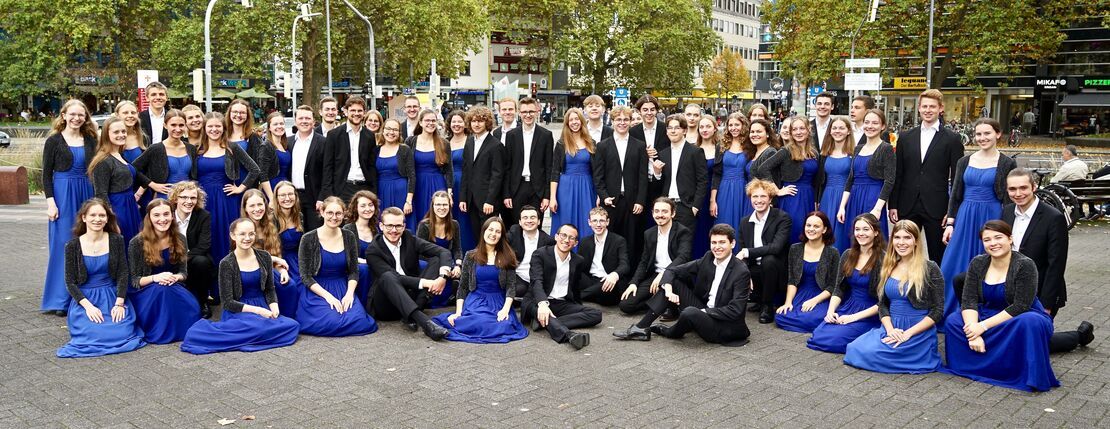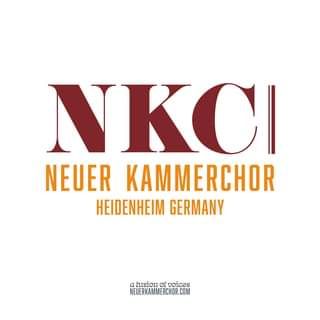
Neuer Kammerchor around the World
vakantio.de/neuerkammerchorgoesbrazil
South Africa Day 12 - Indigenous Market and Impressive Concert
Publikovaný: 30.05.2024
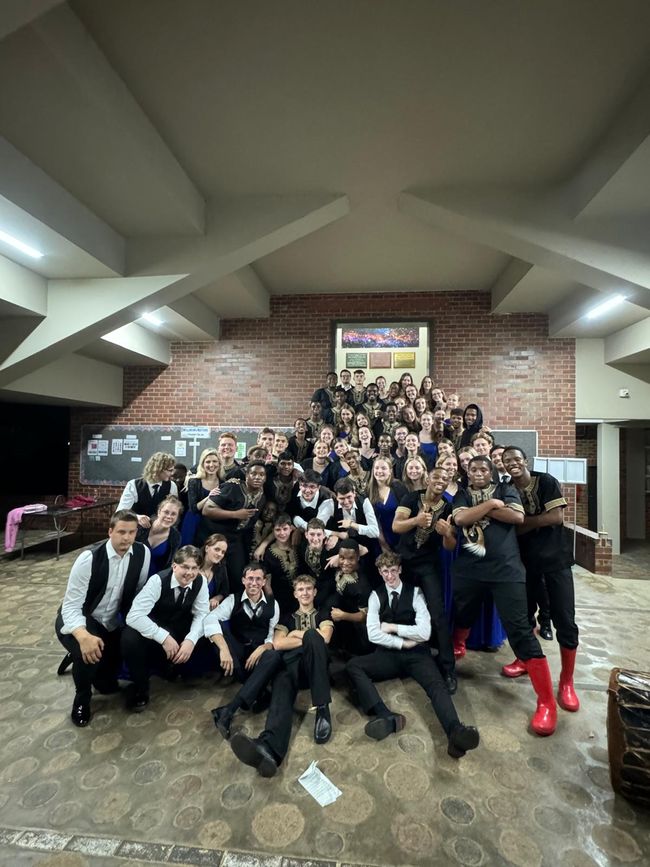

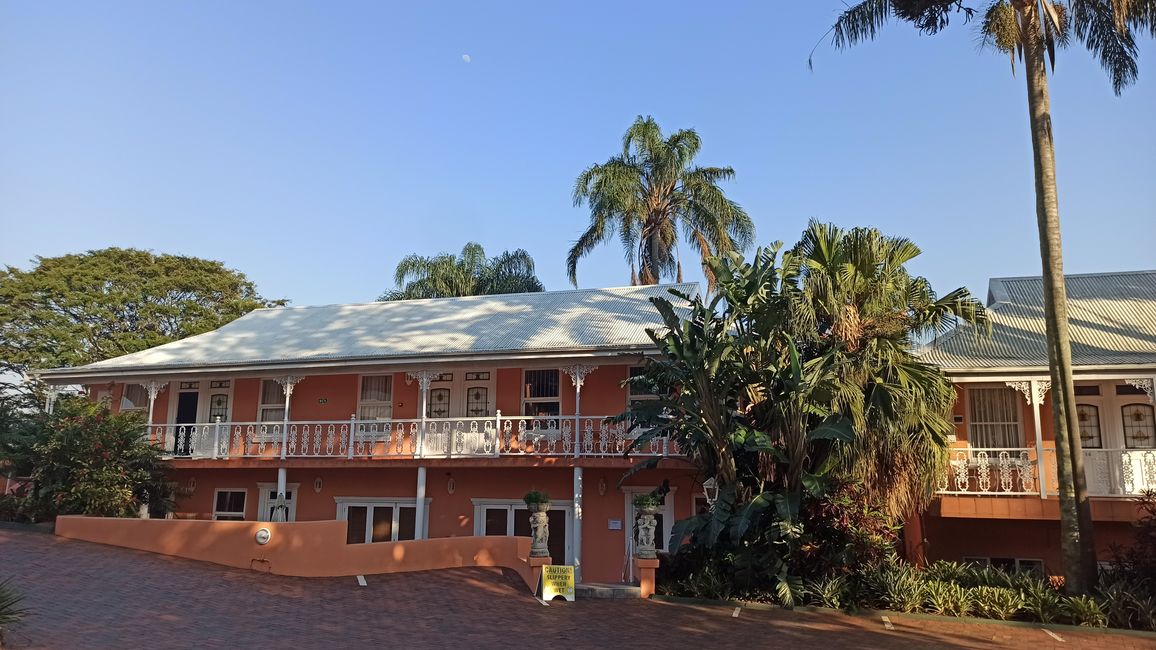
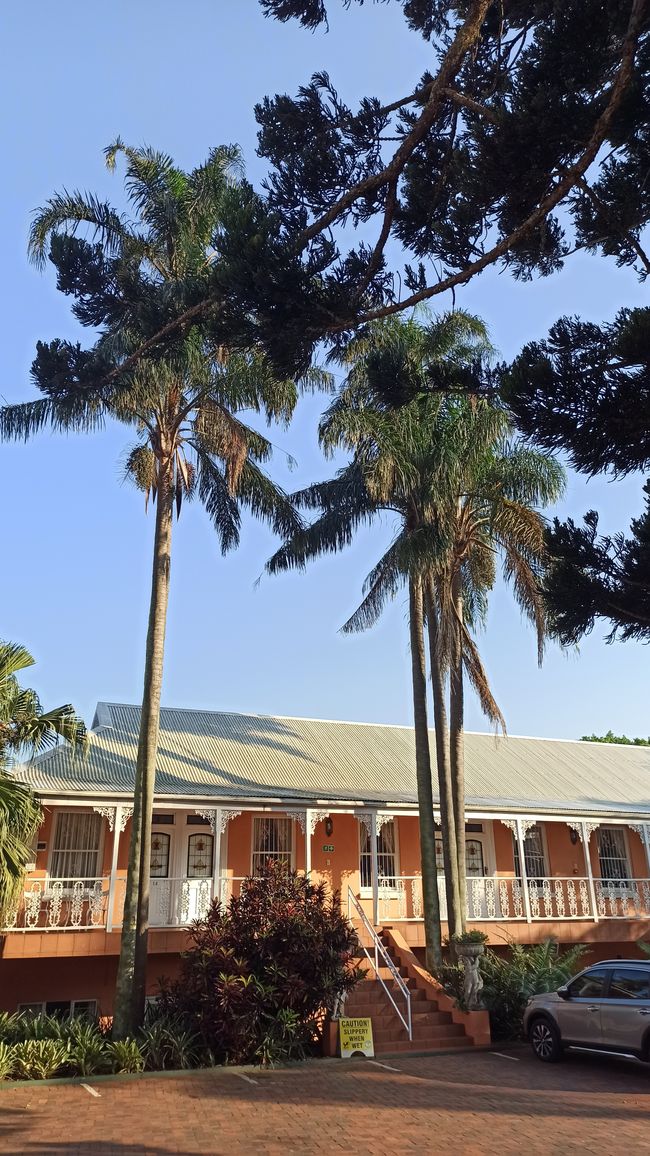
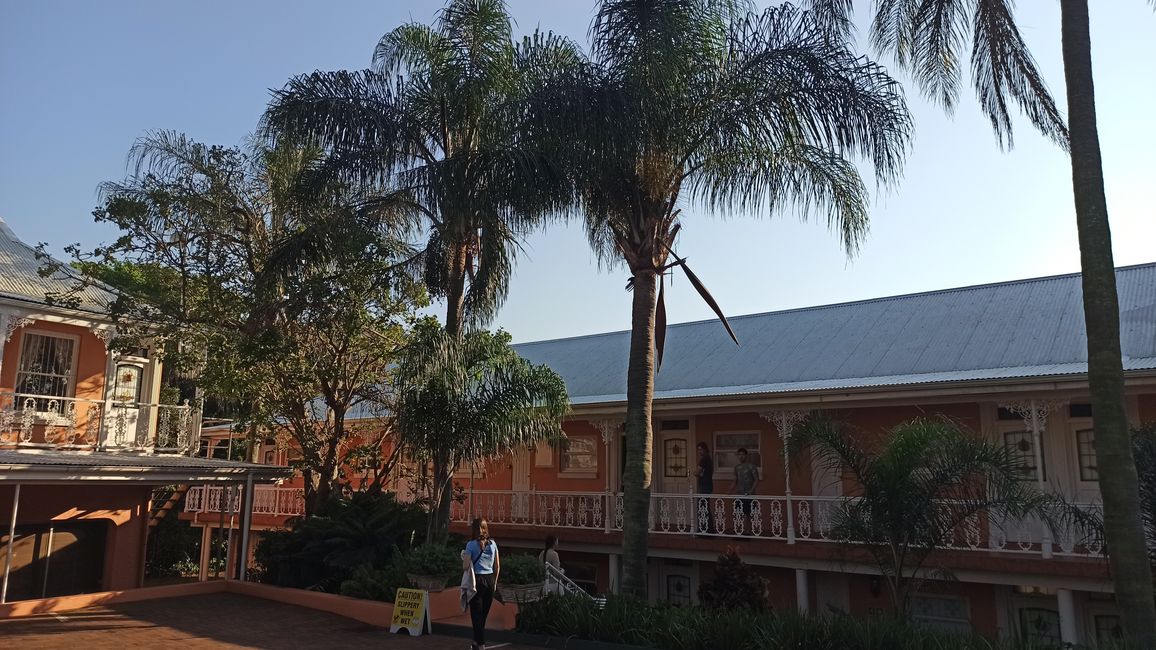
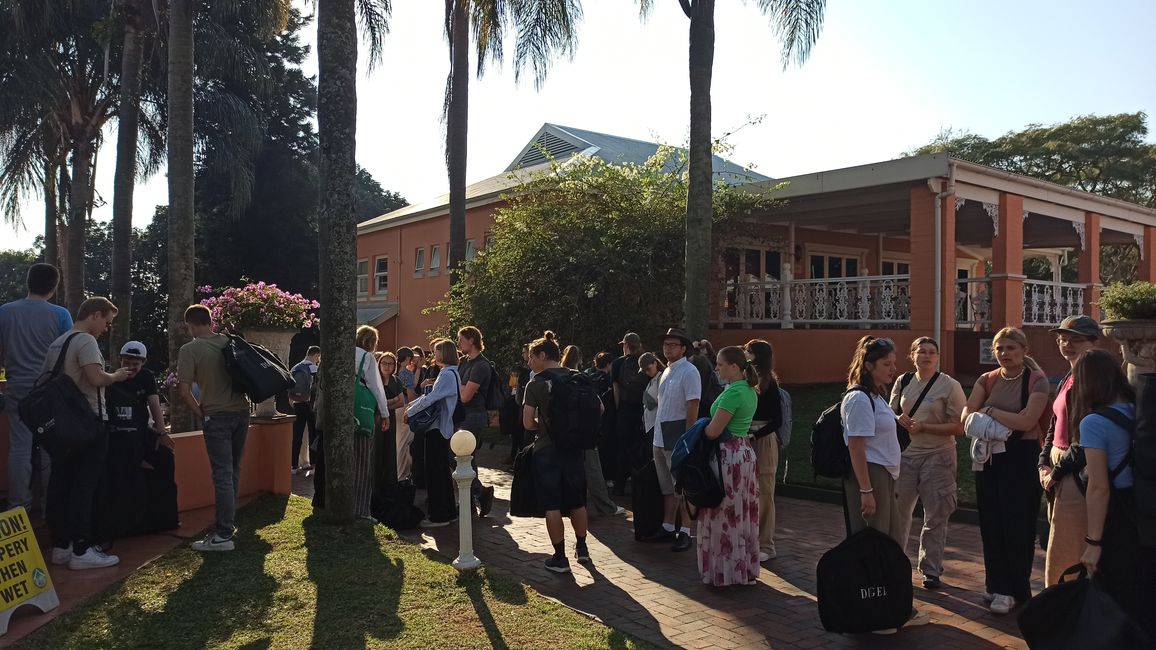
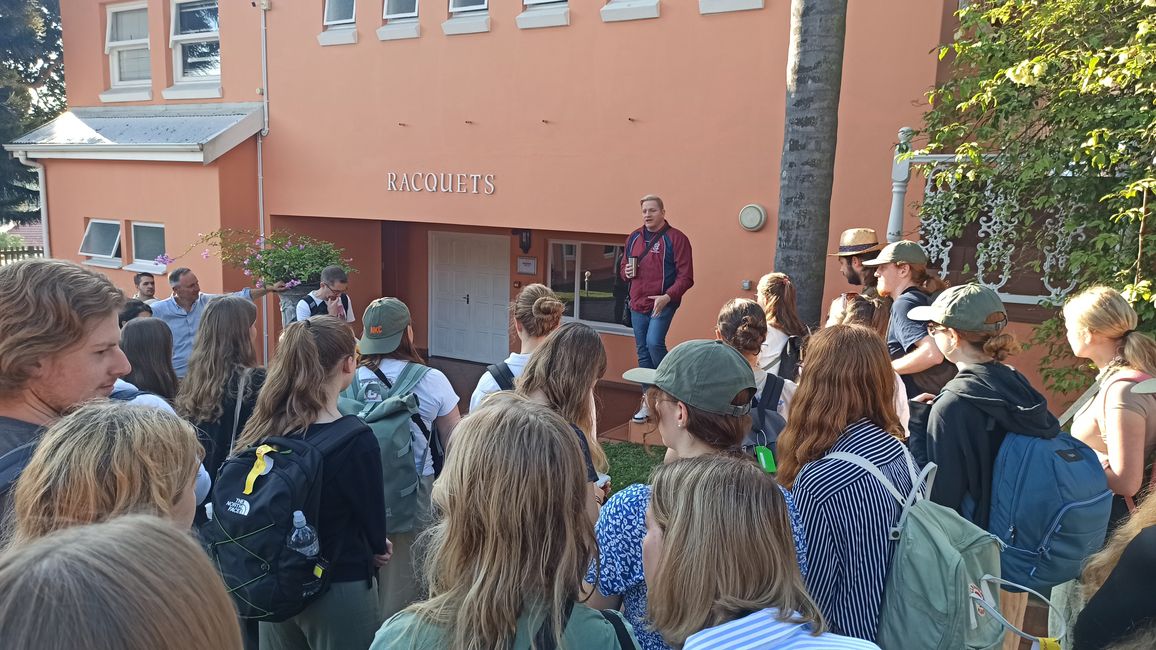
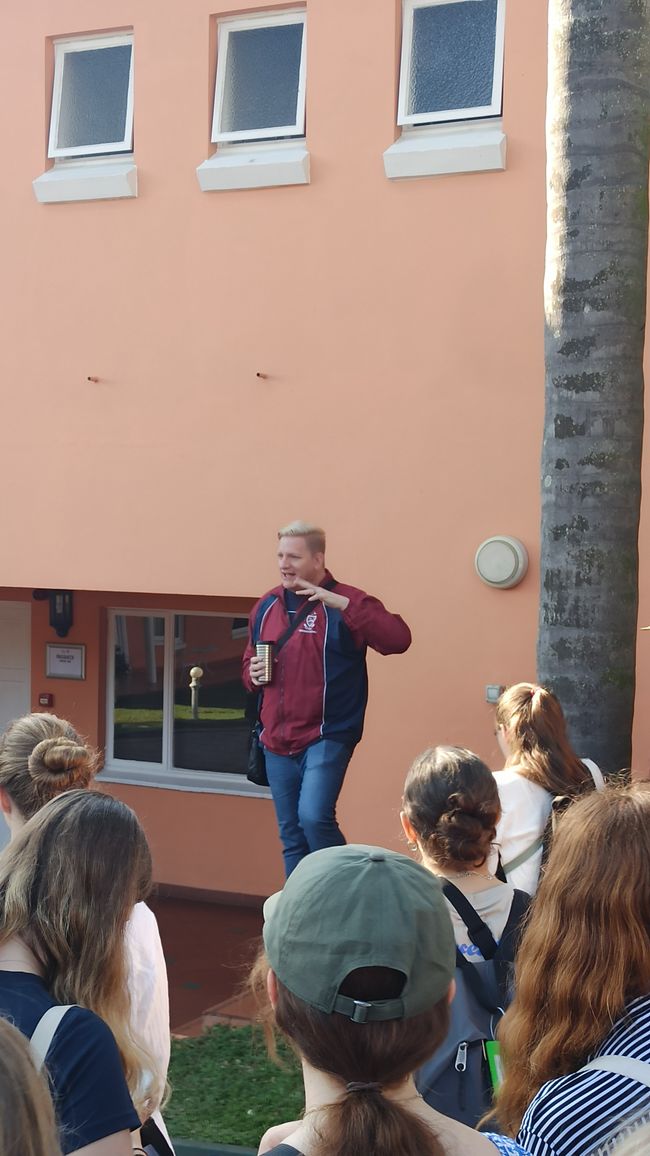
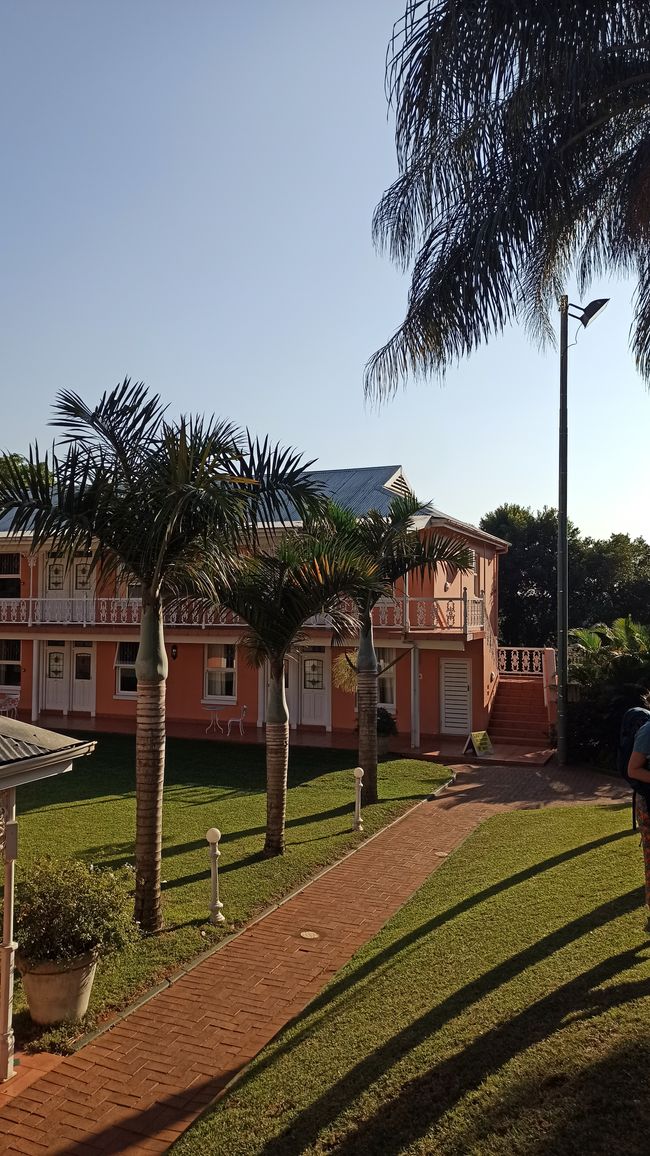
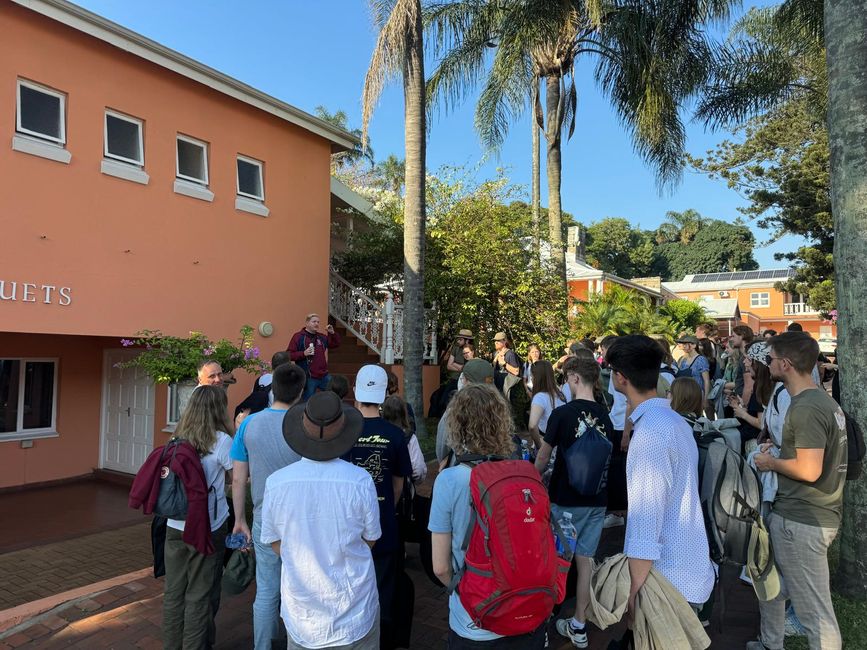
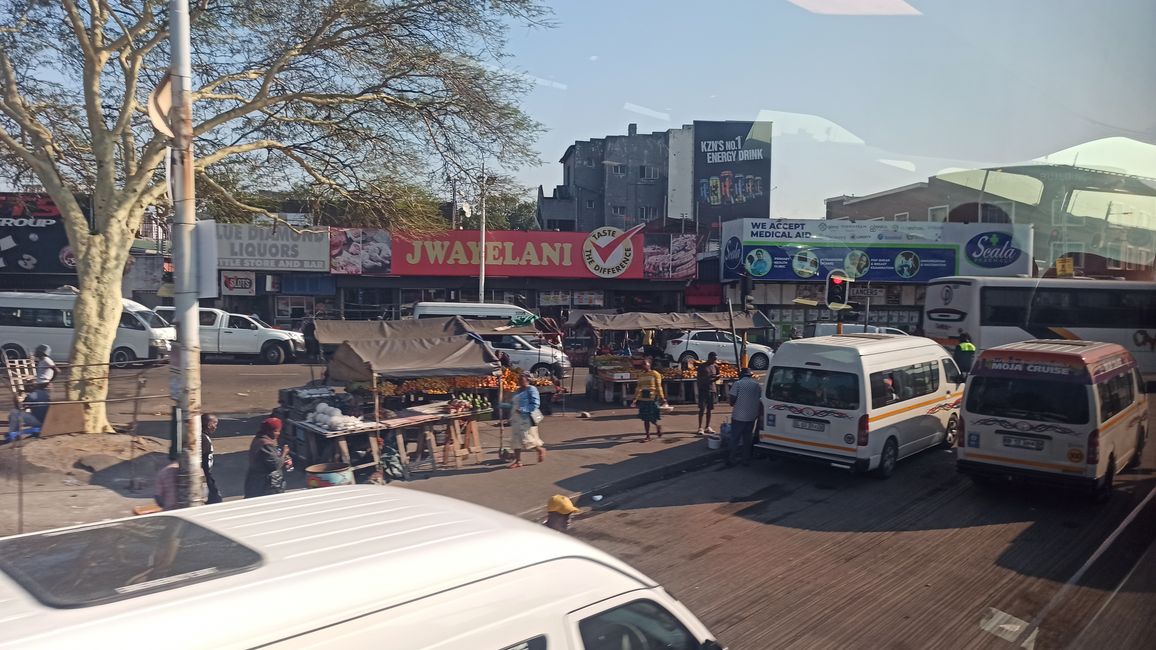
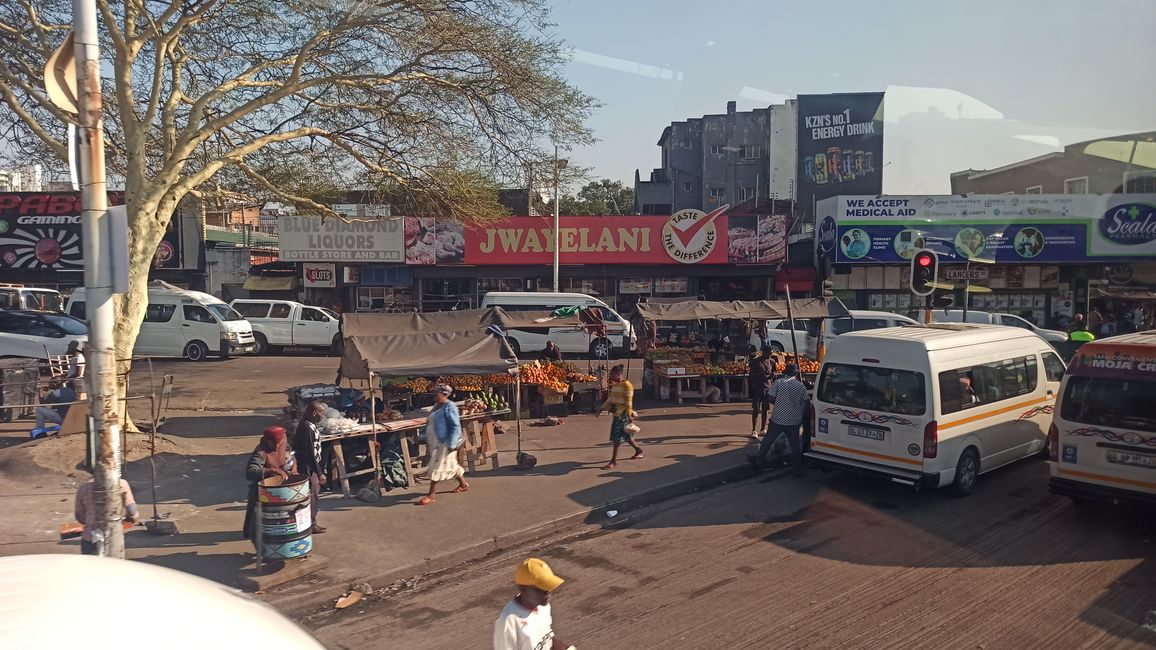

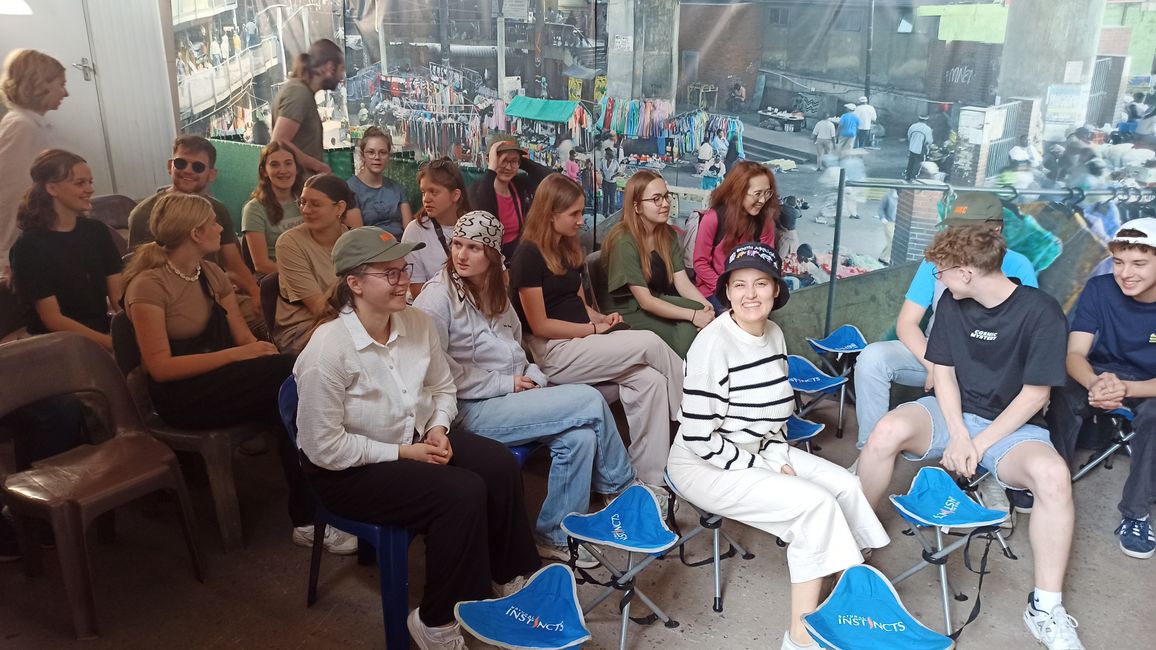
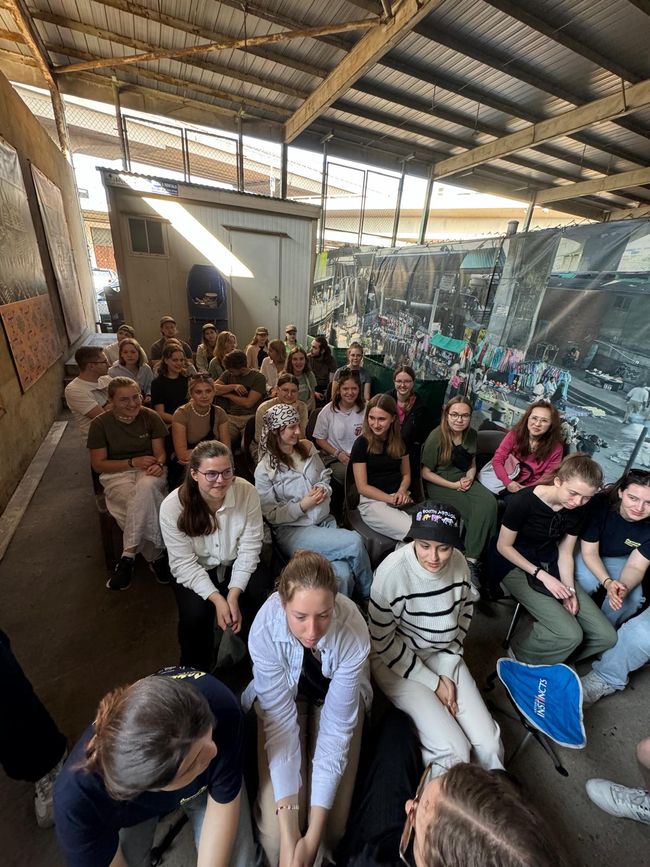
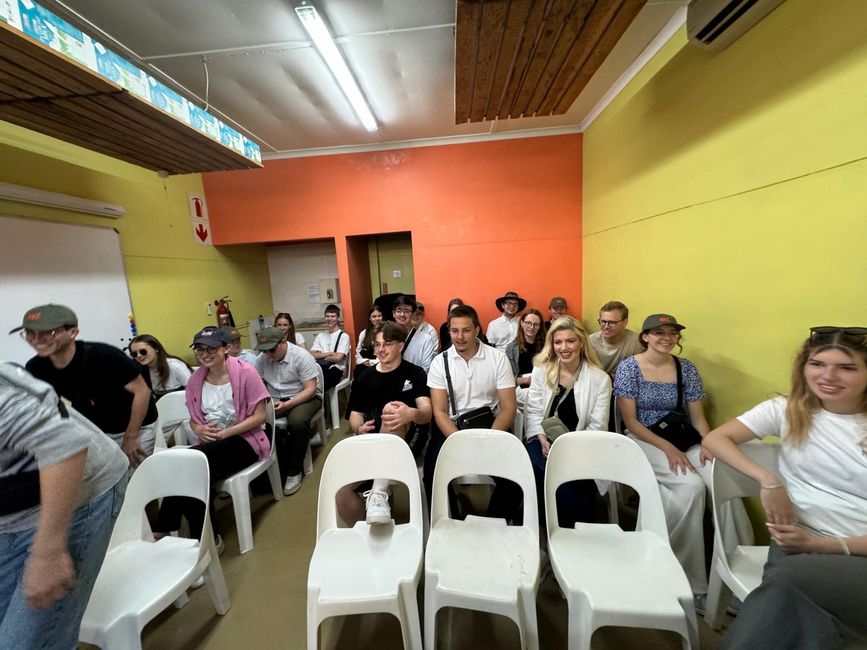
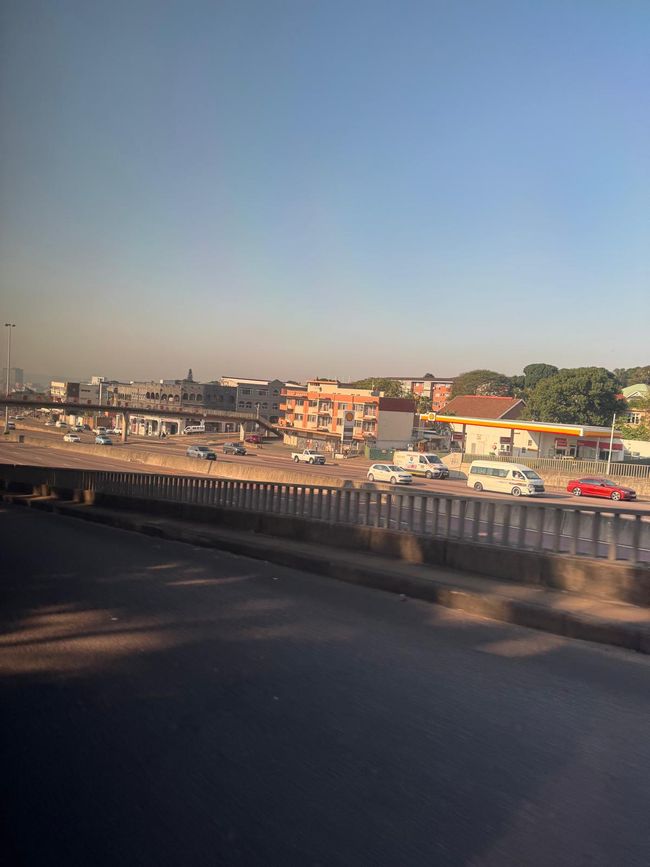
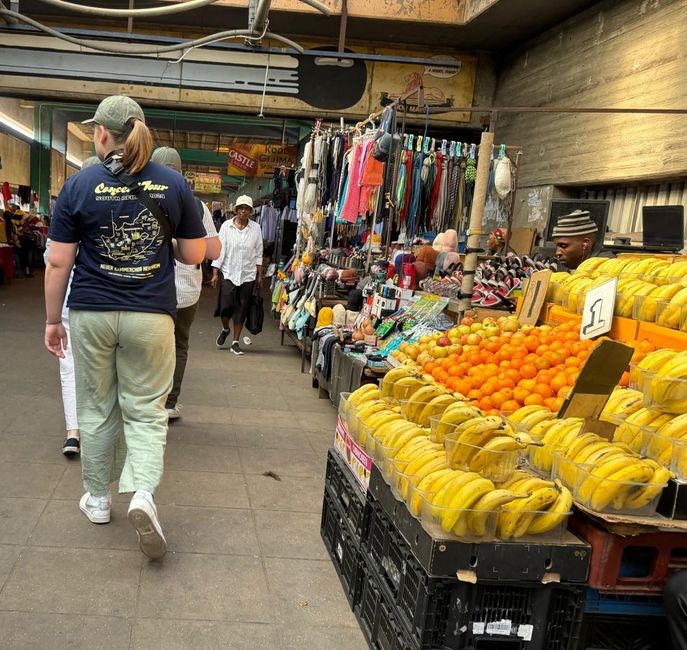

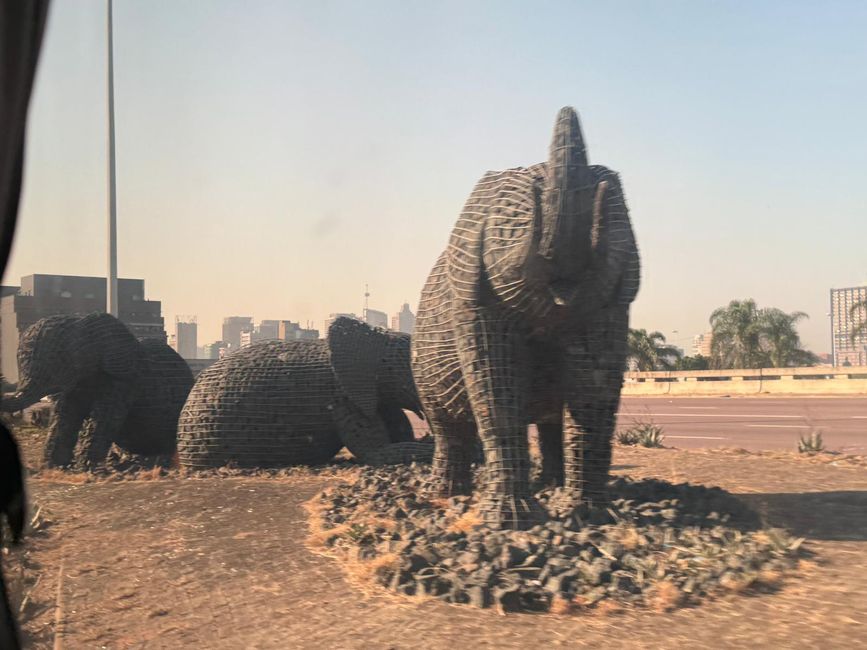
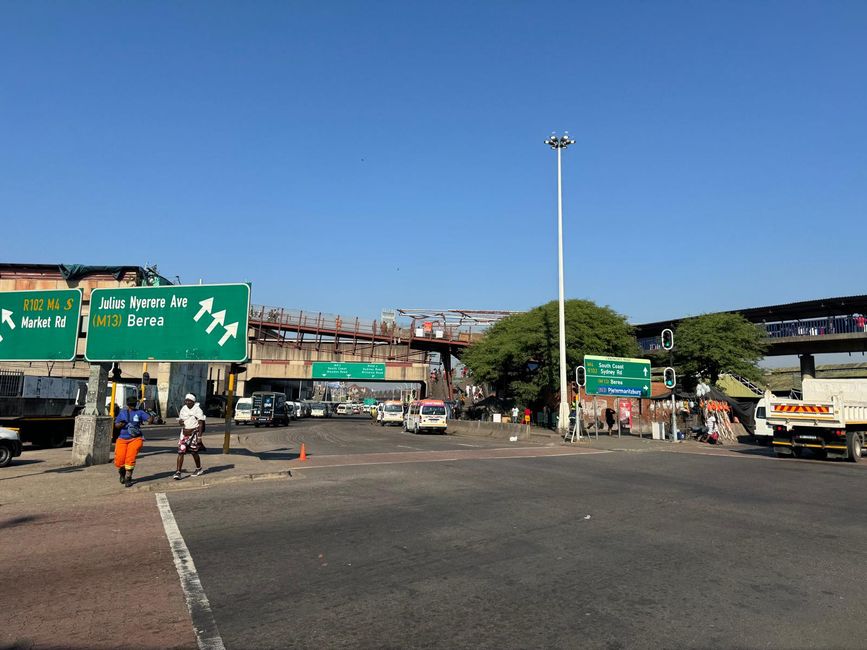

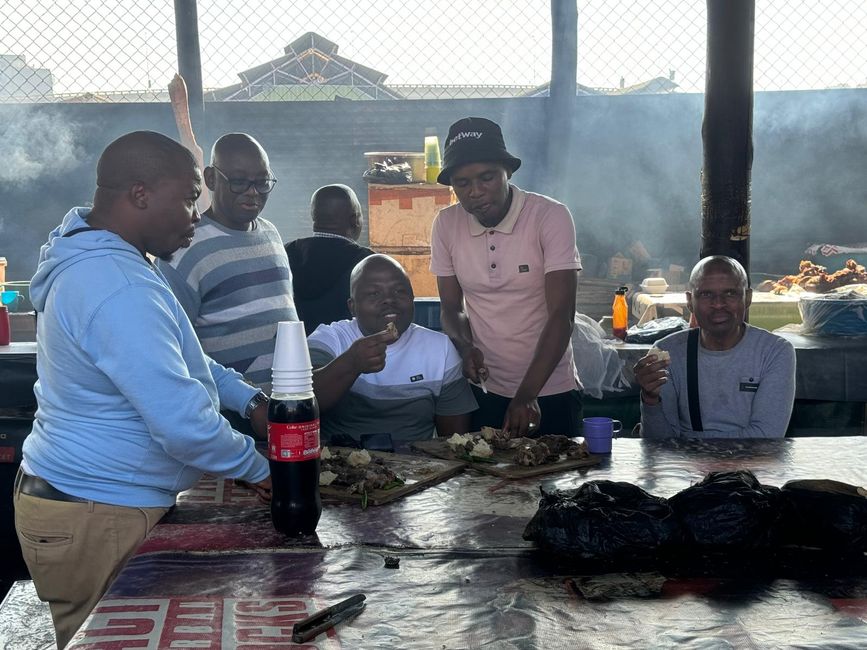
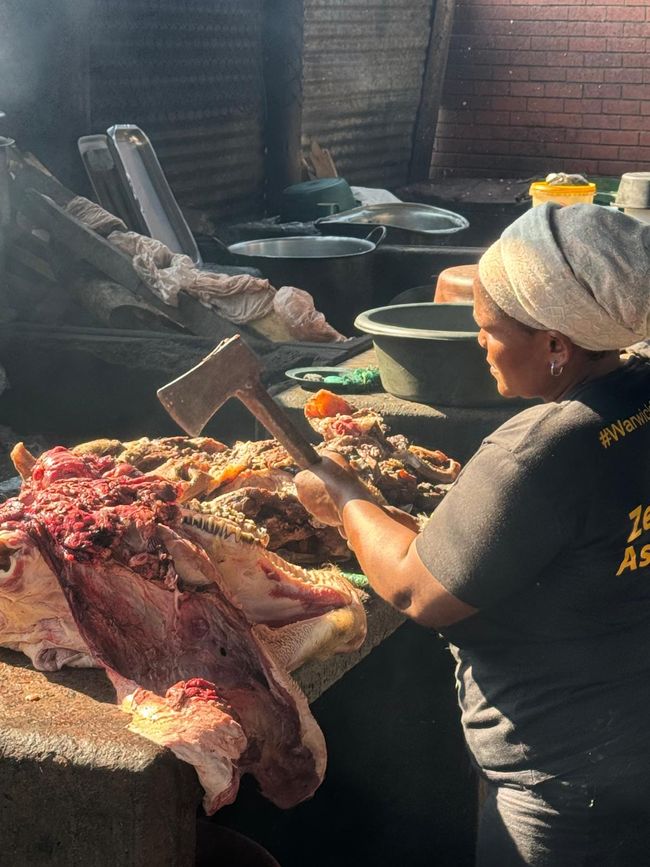
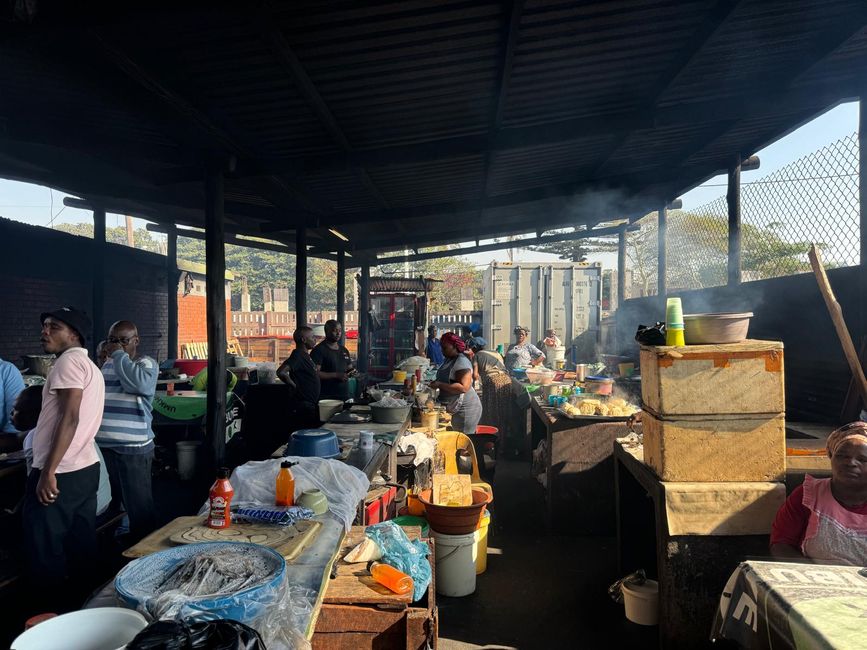
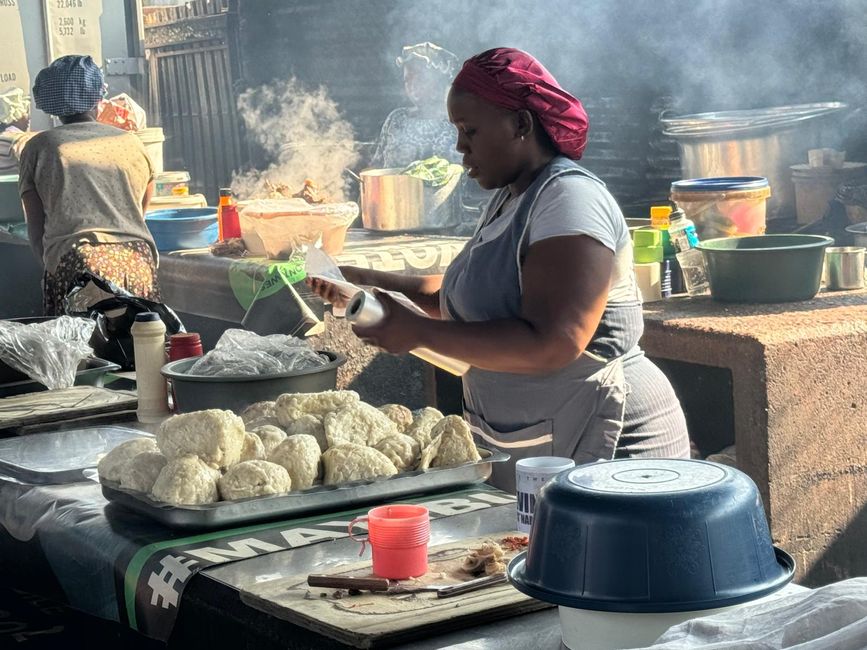
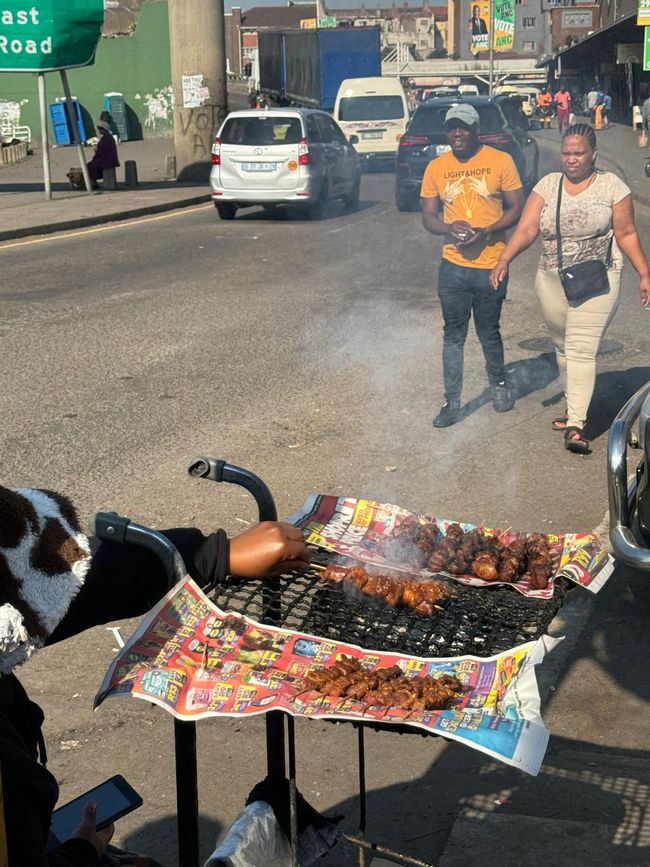

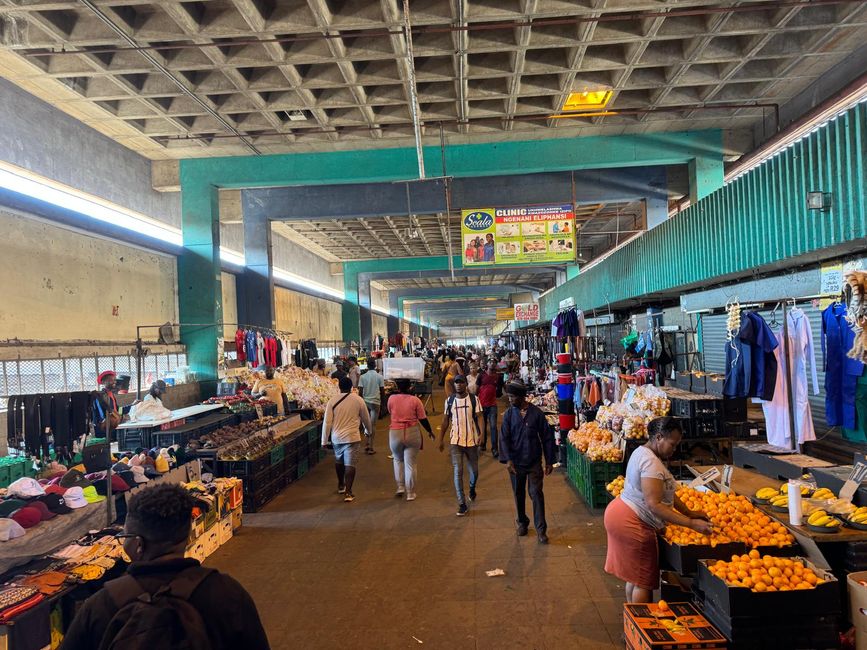
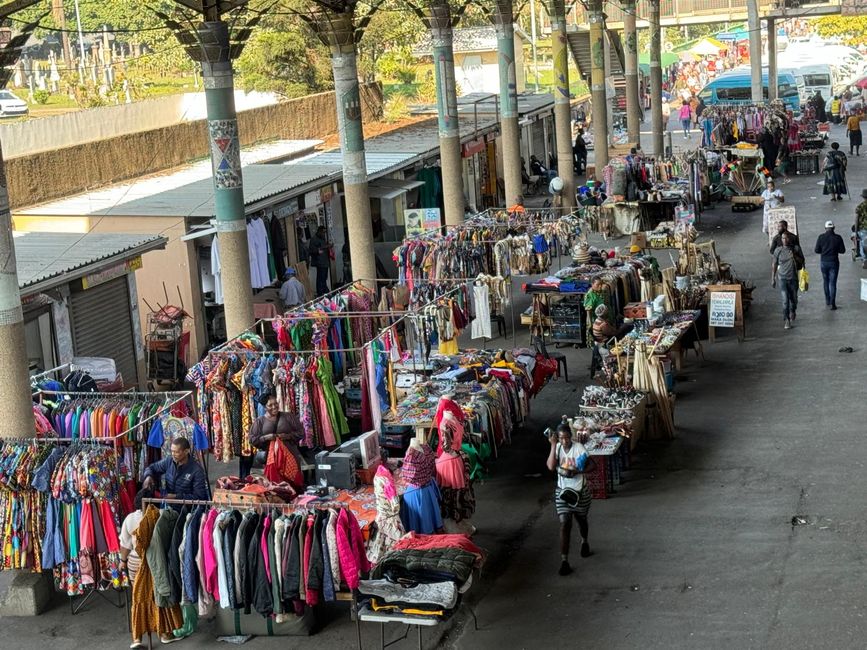
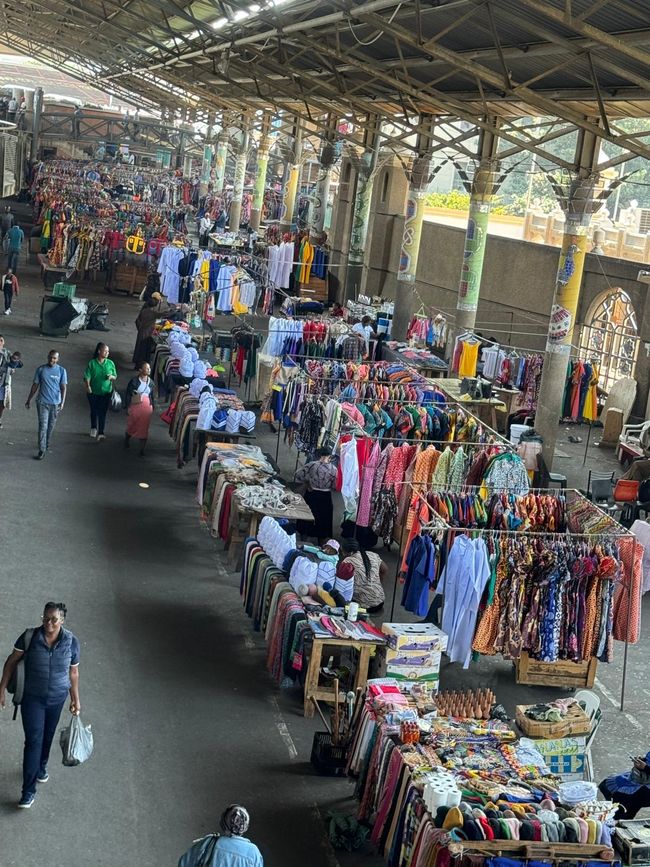

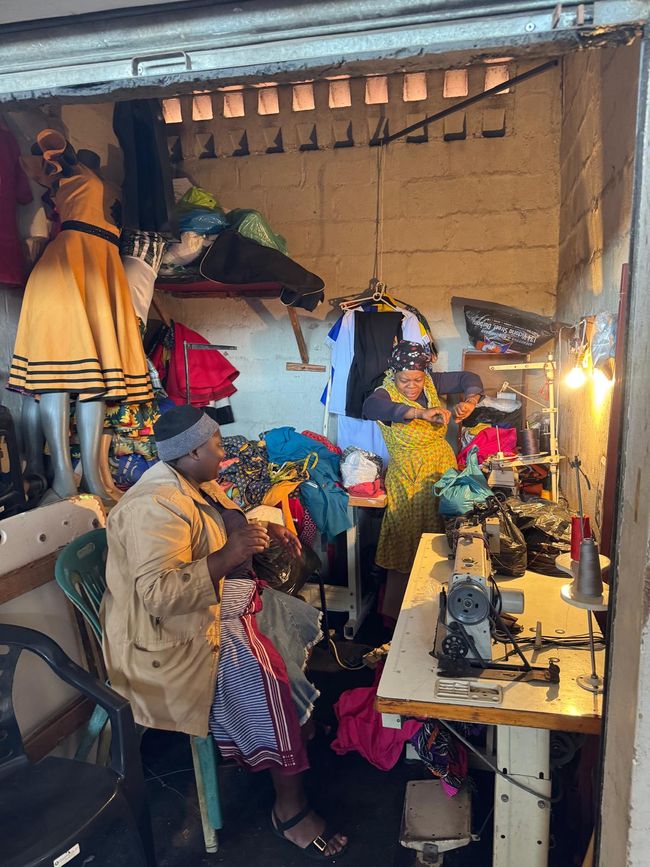
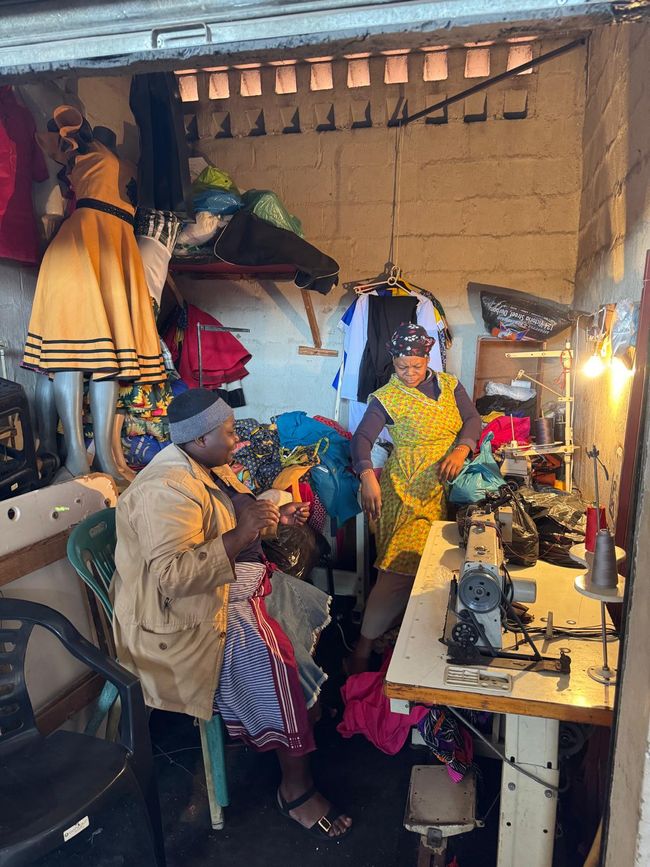
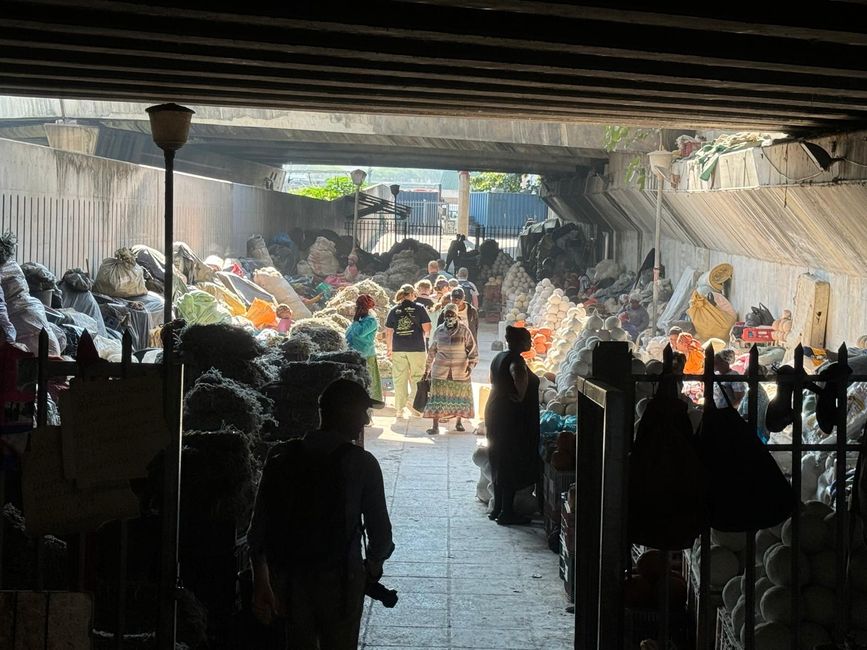
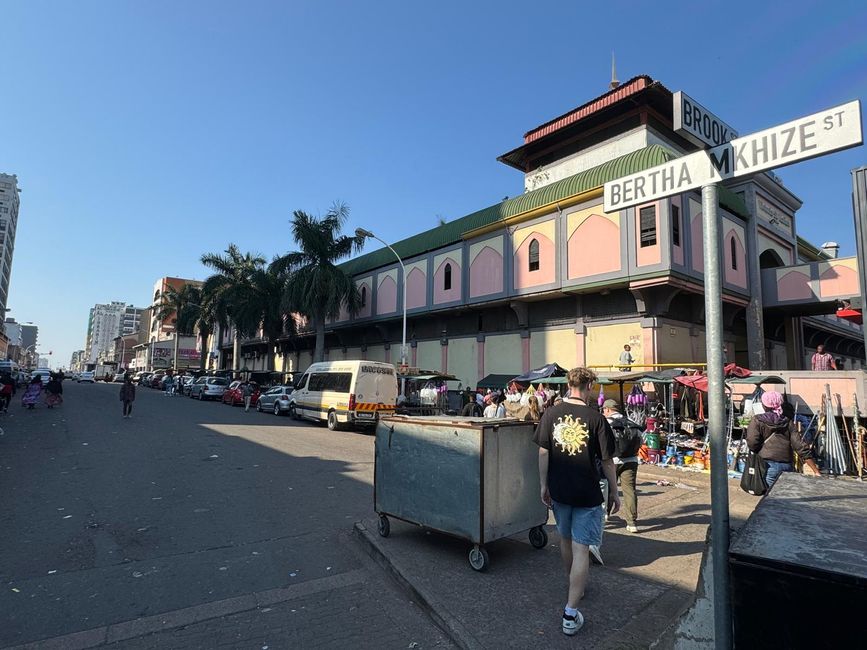
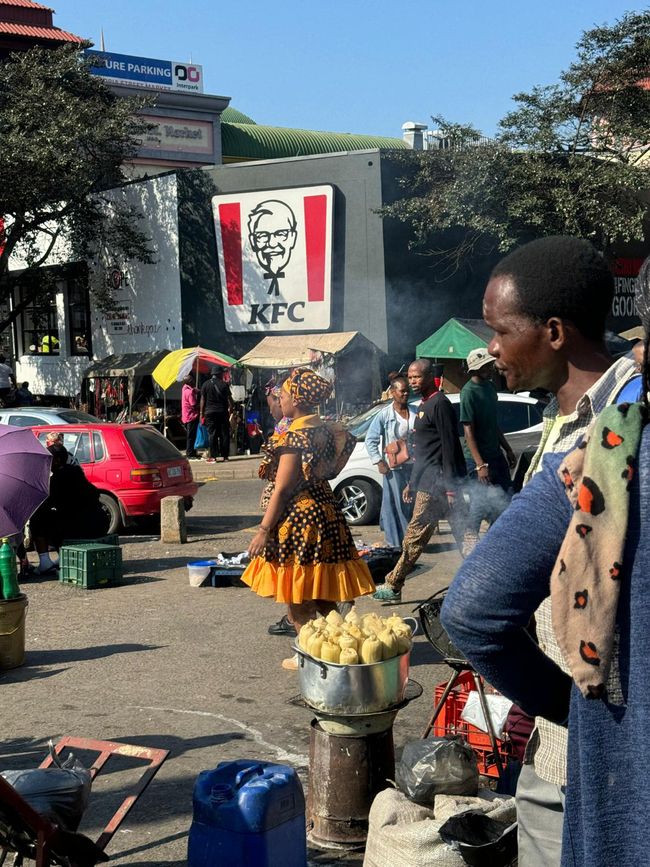
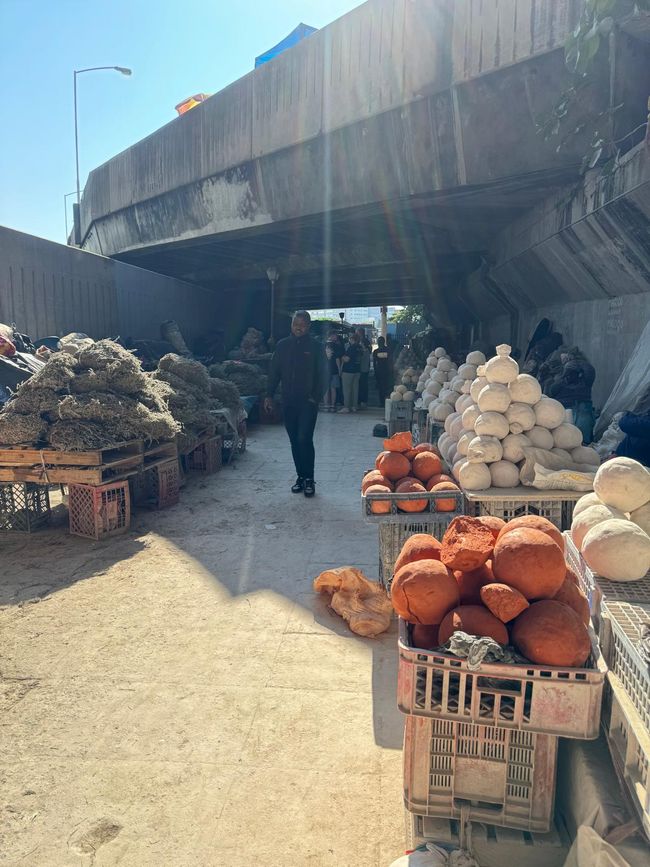
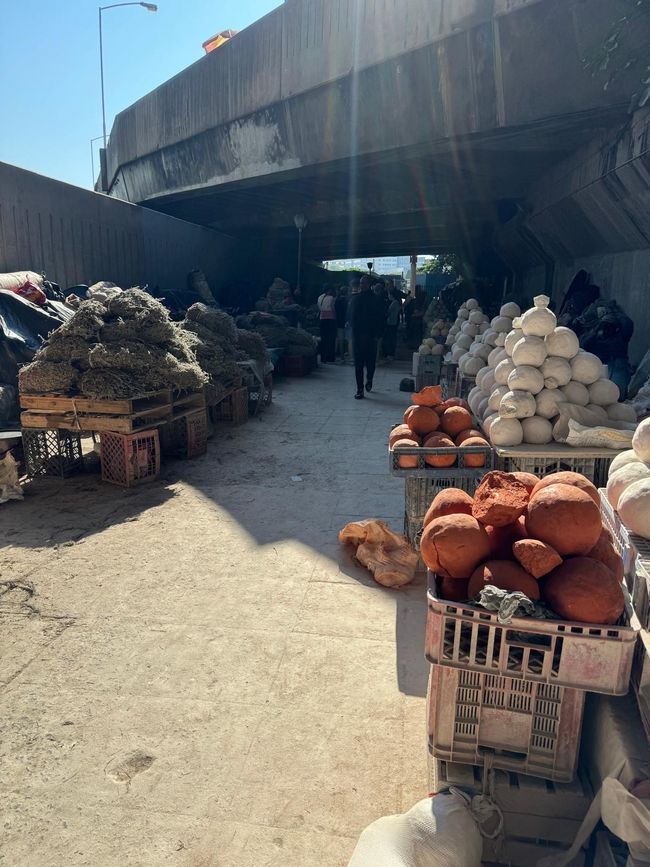
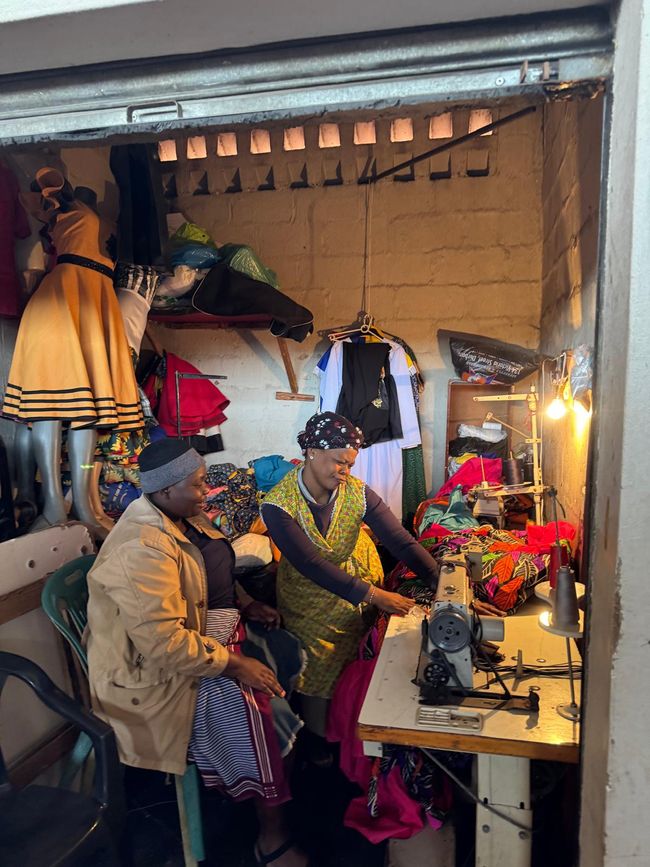

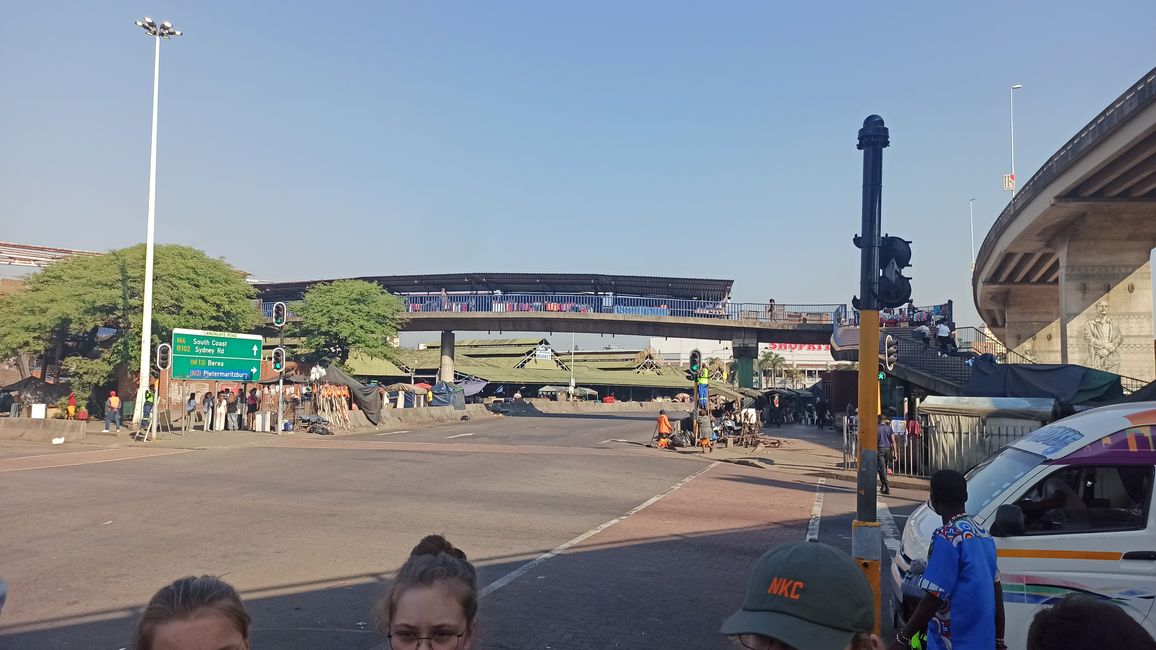
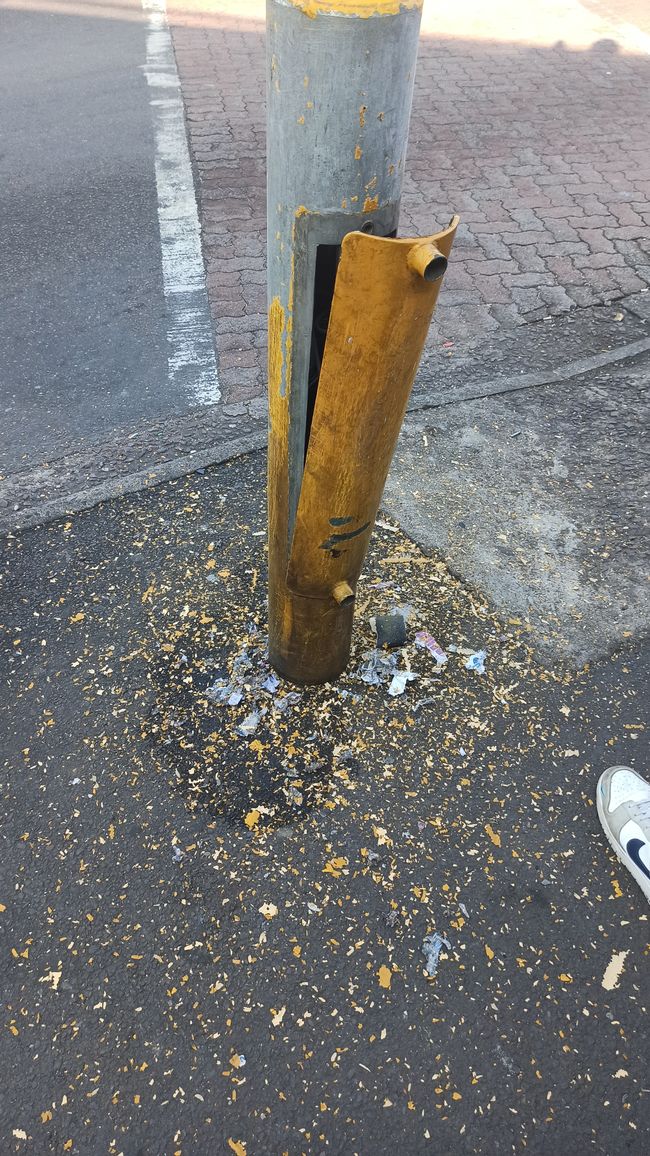
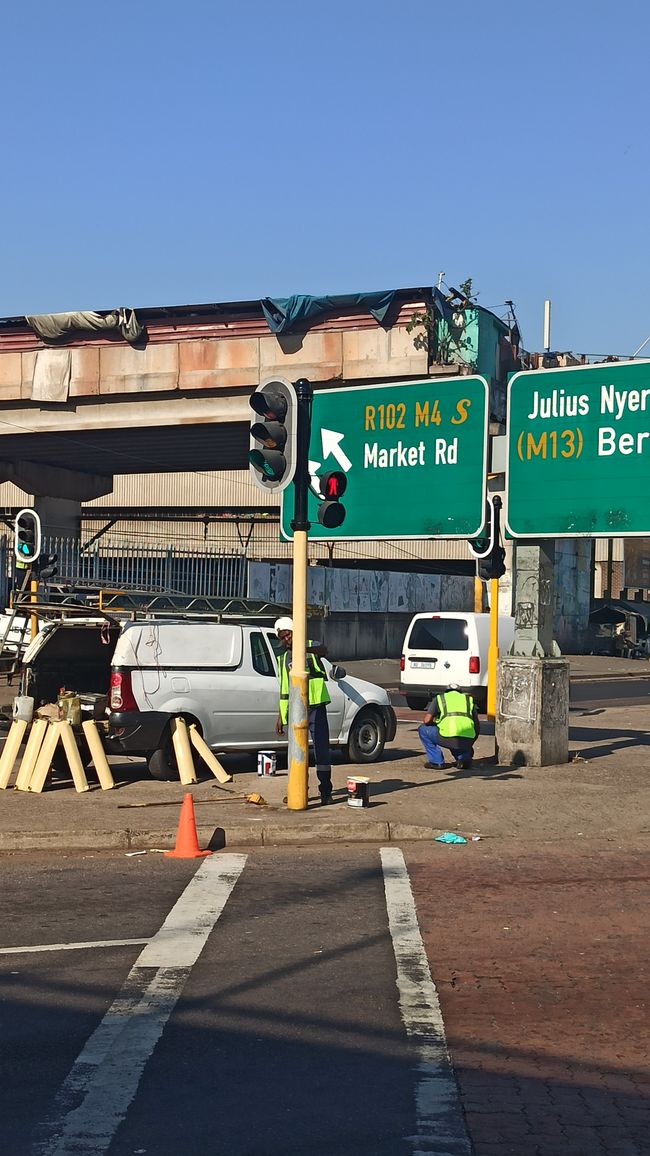
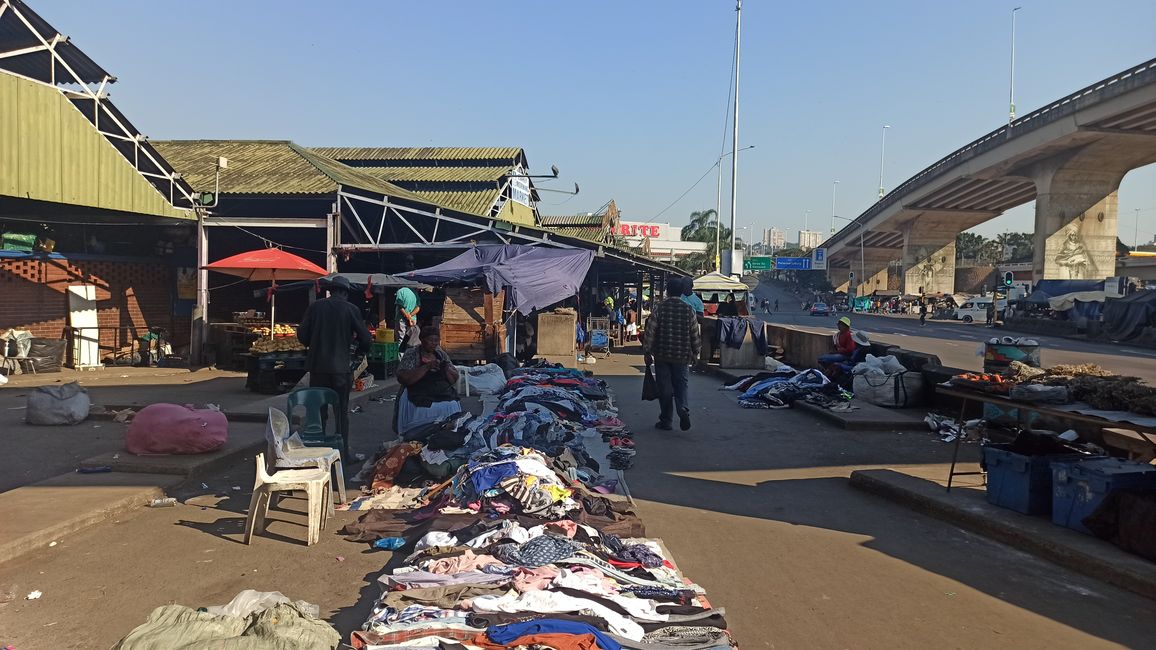
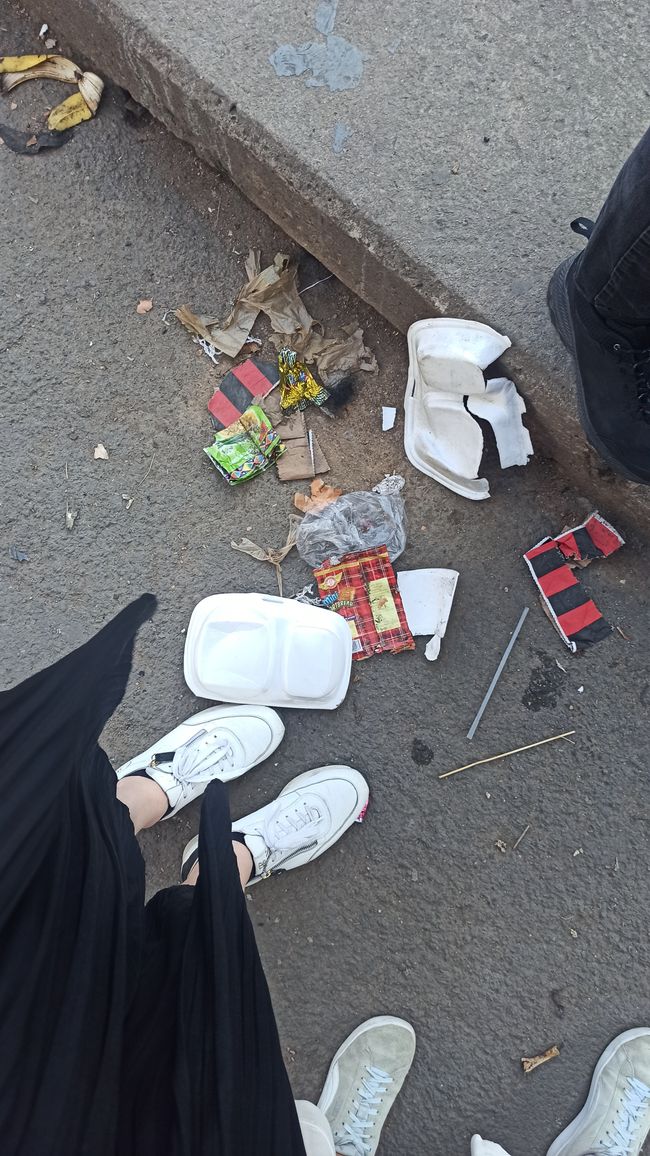
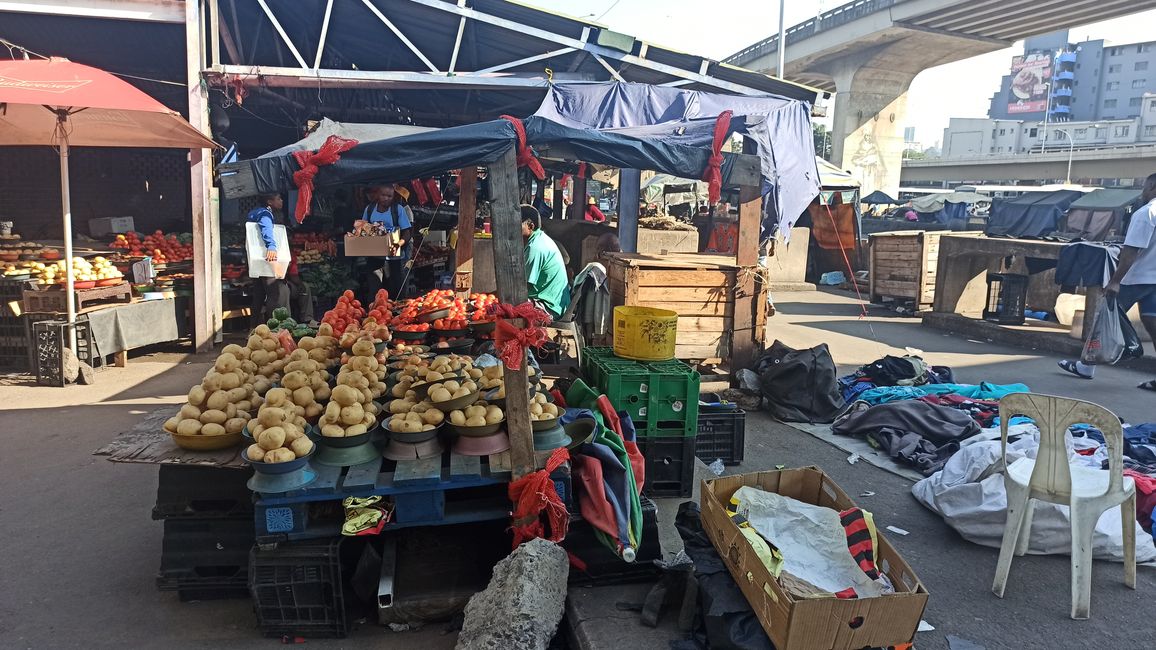
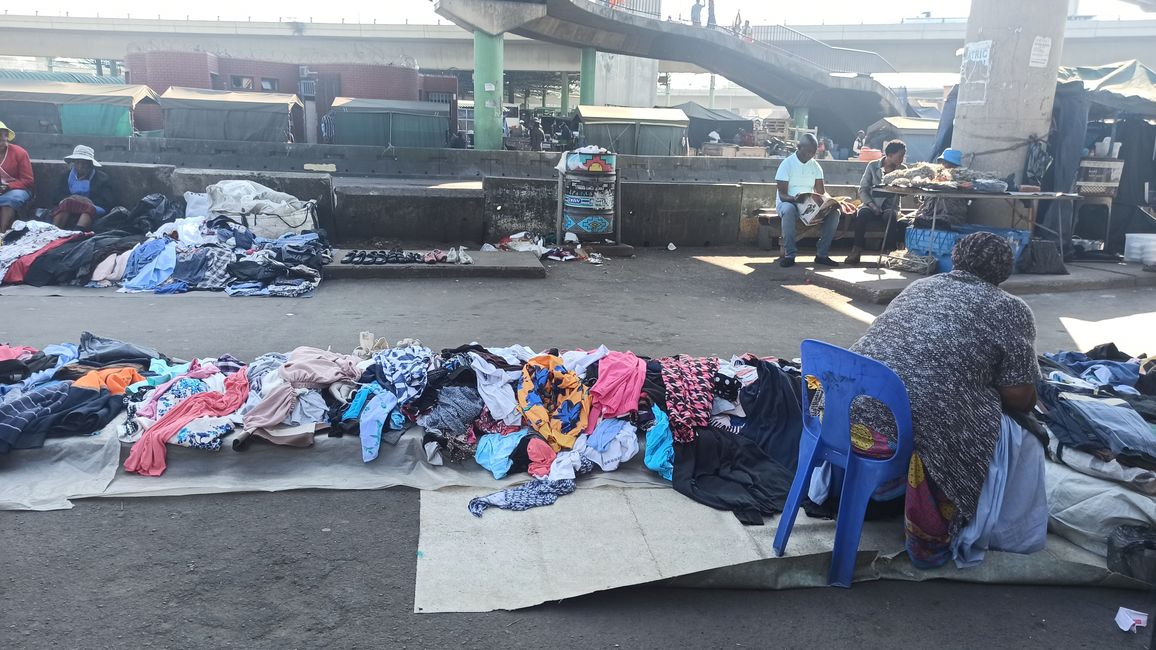
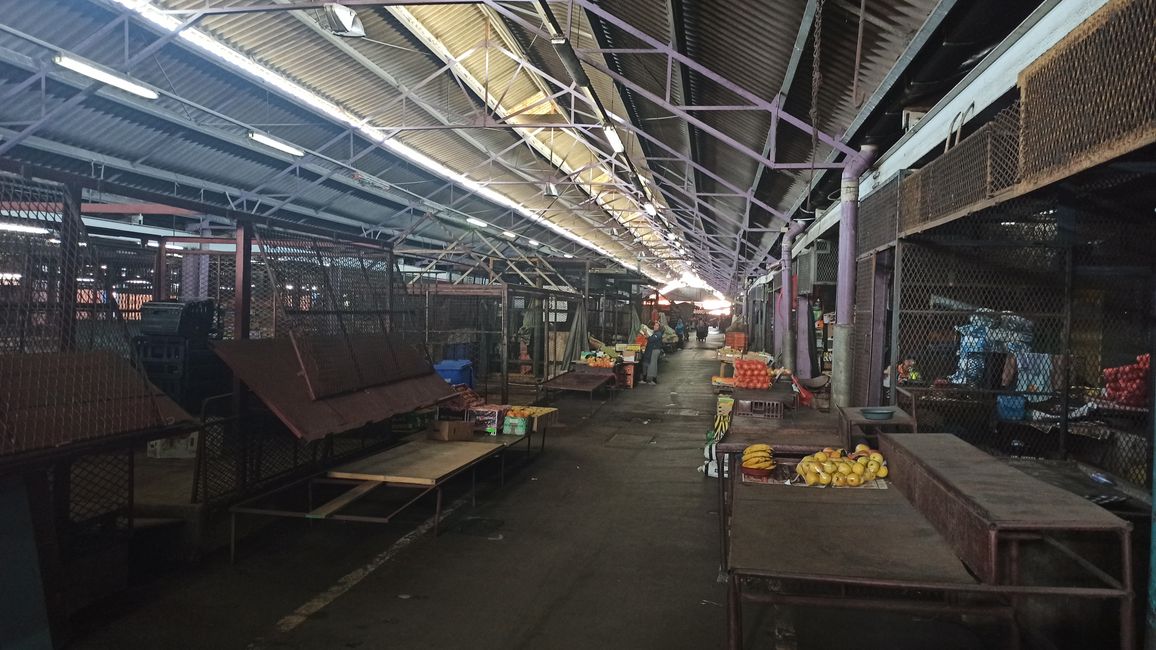
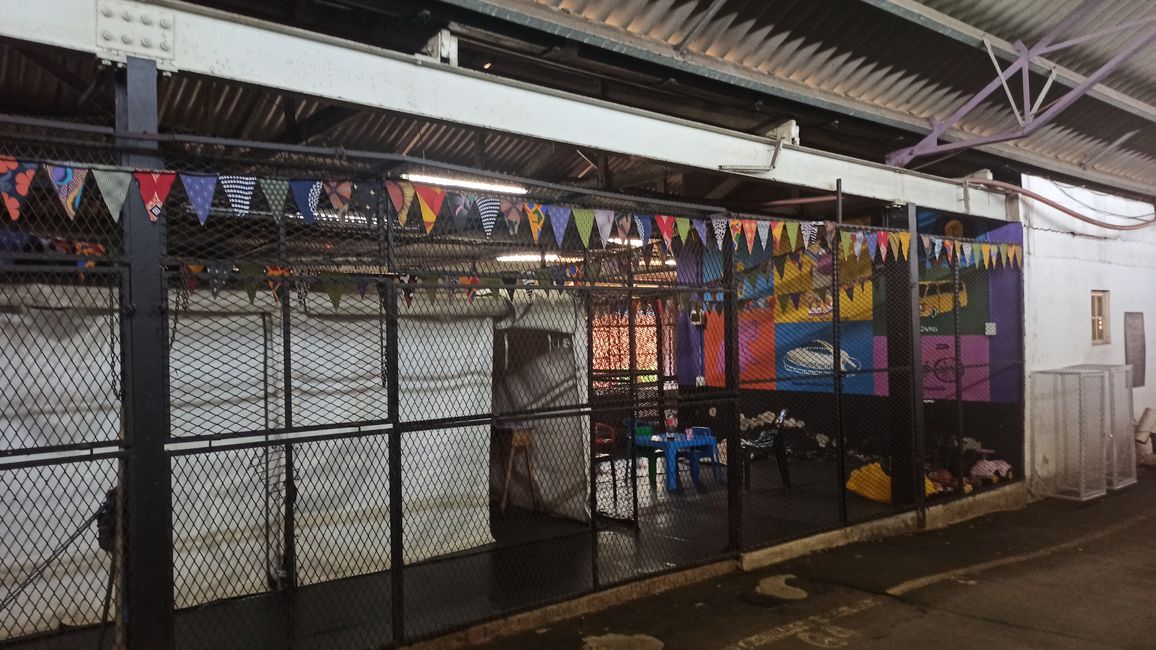
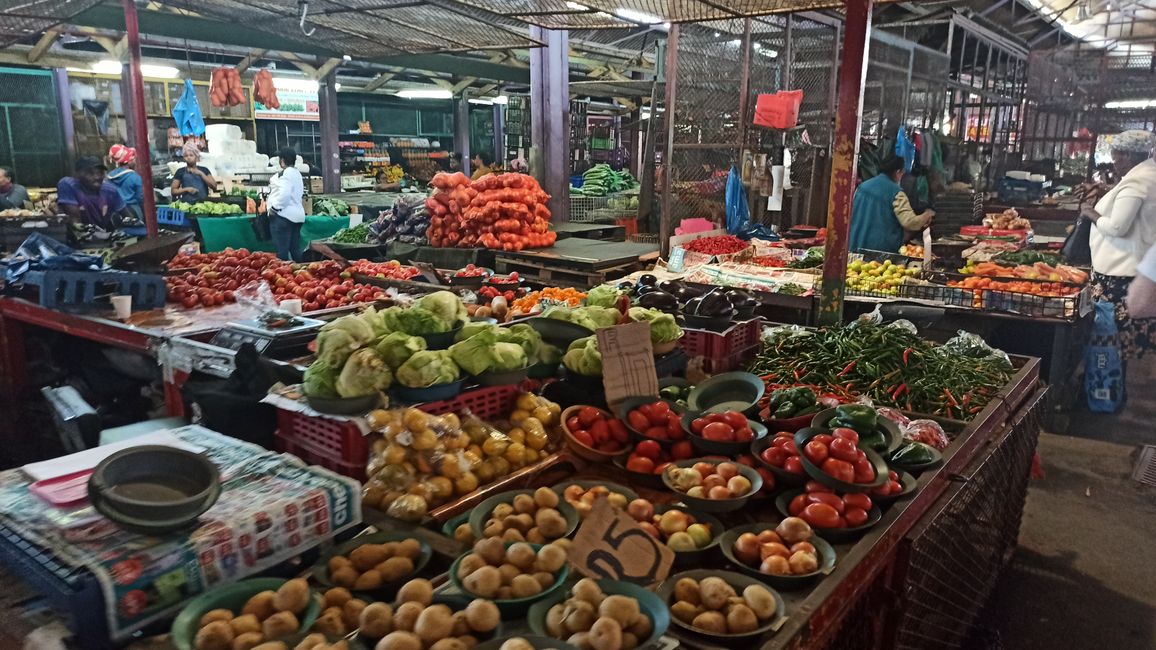
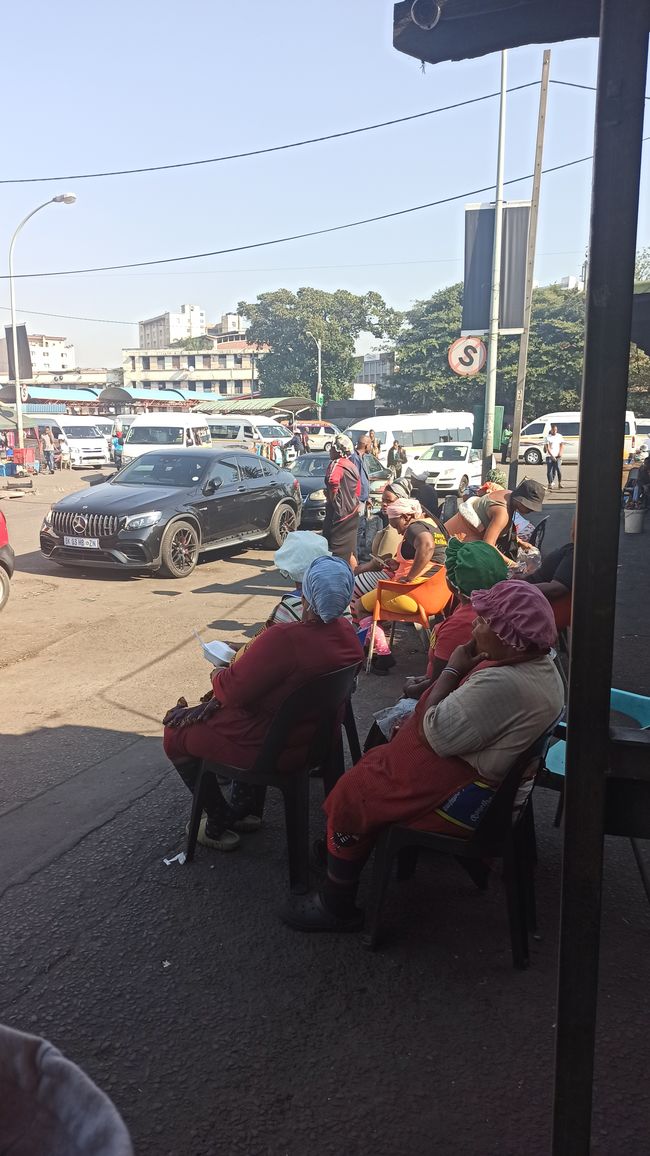
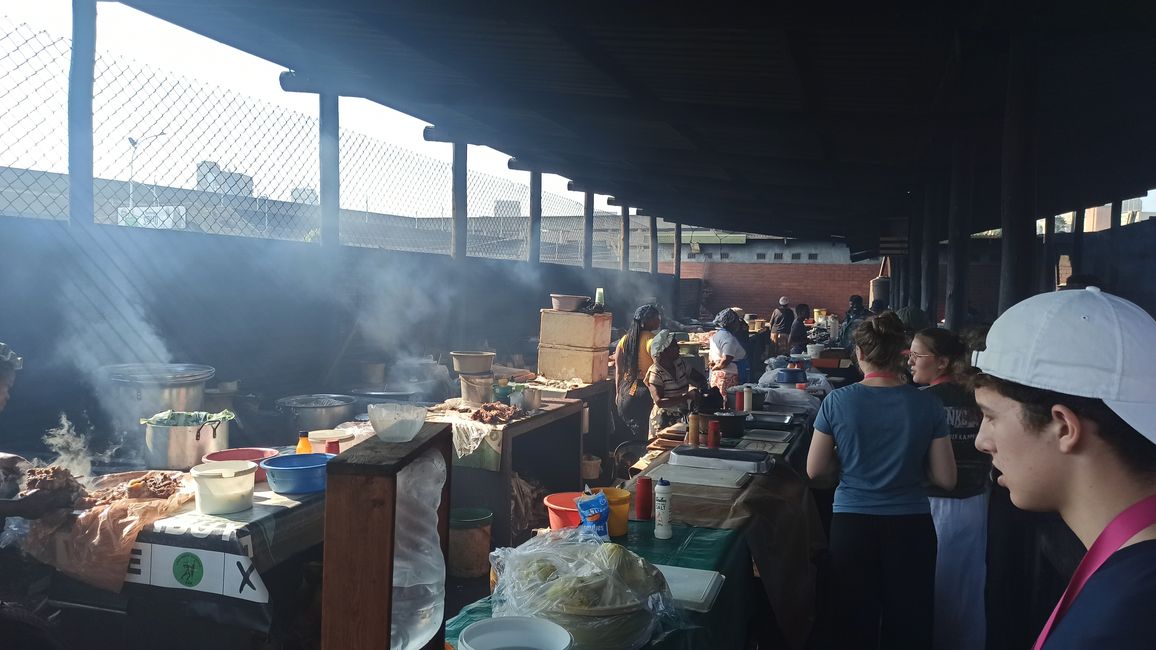
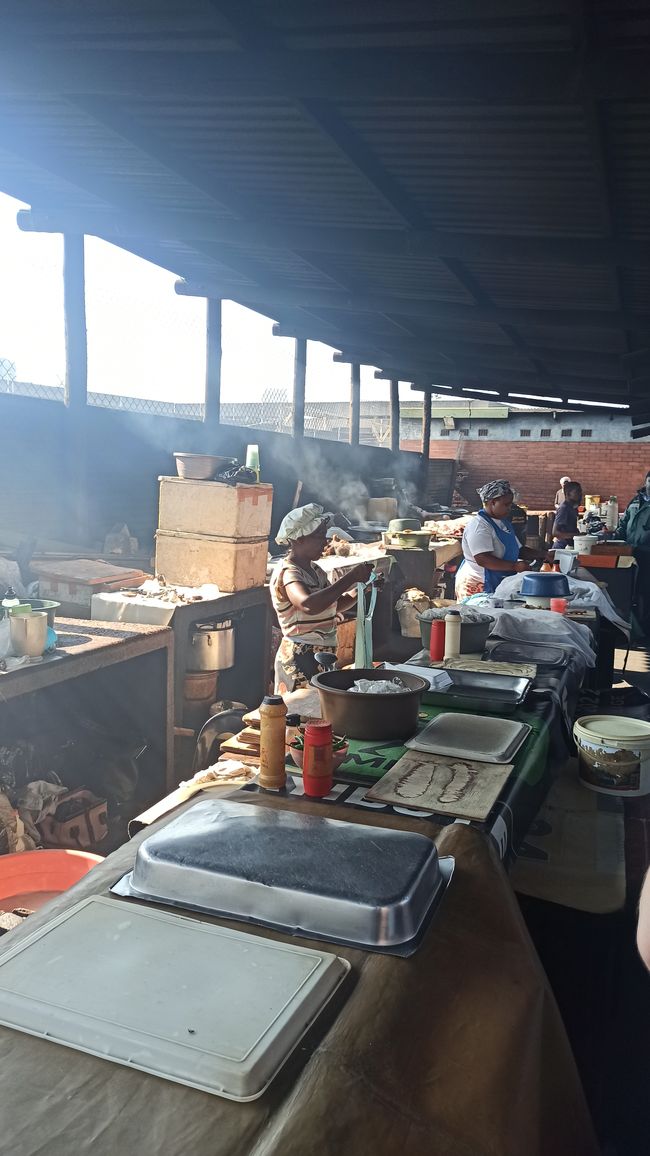
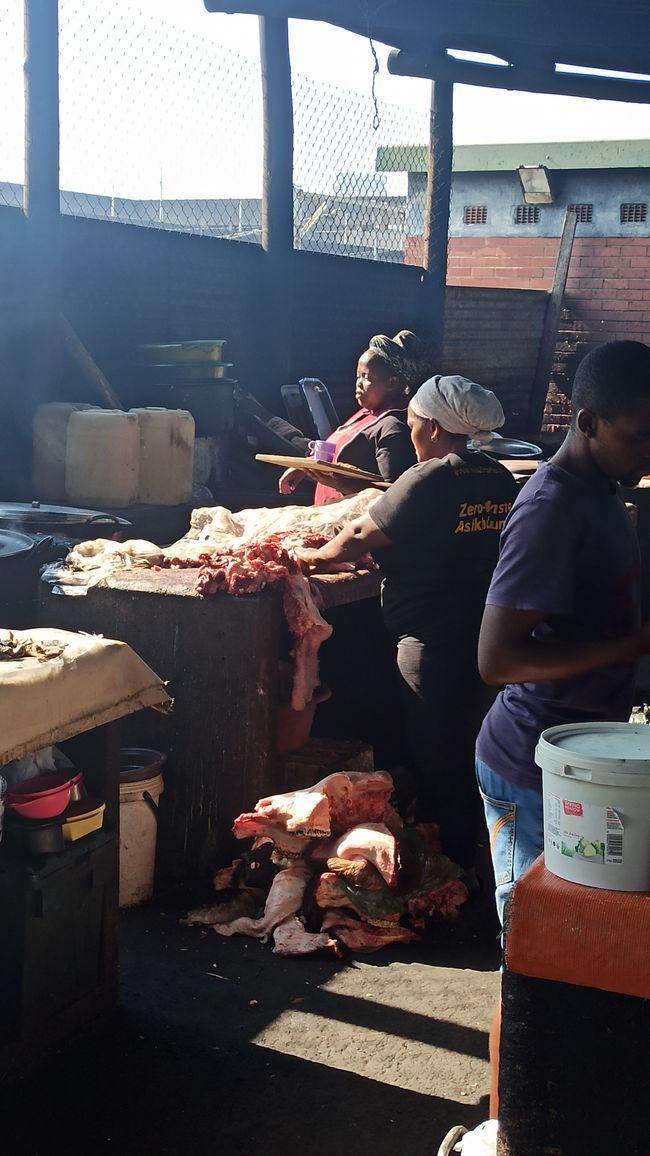
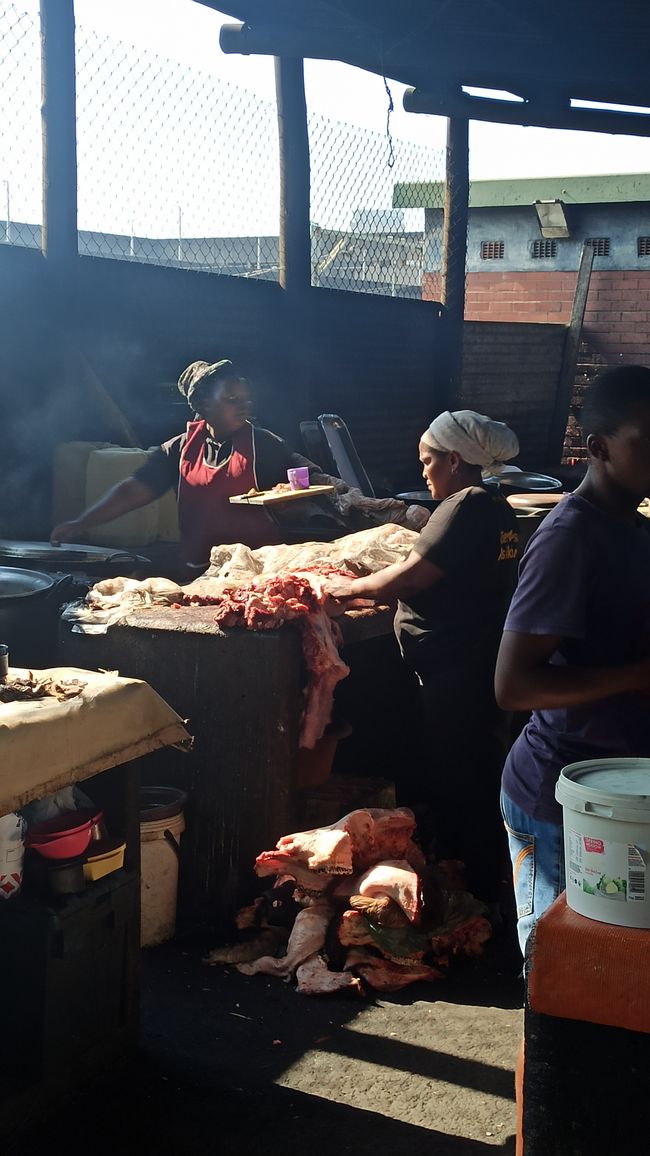
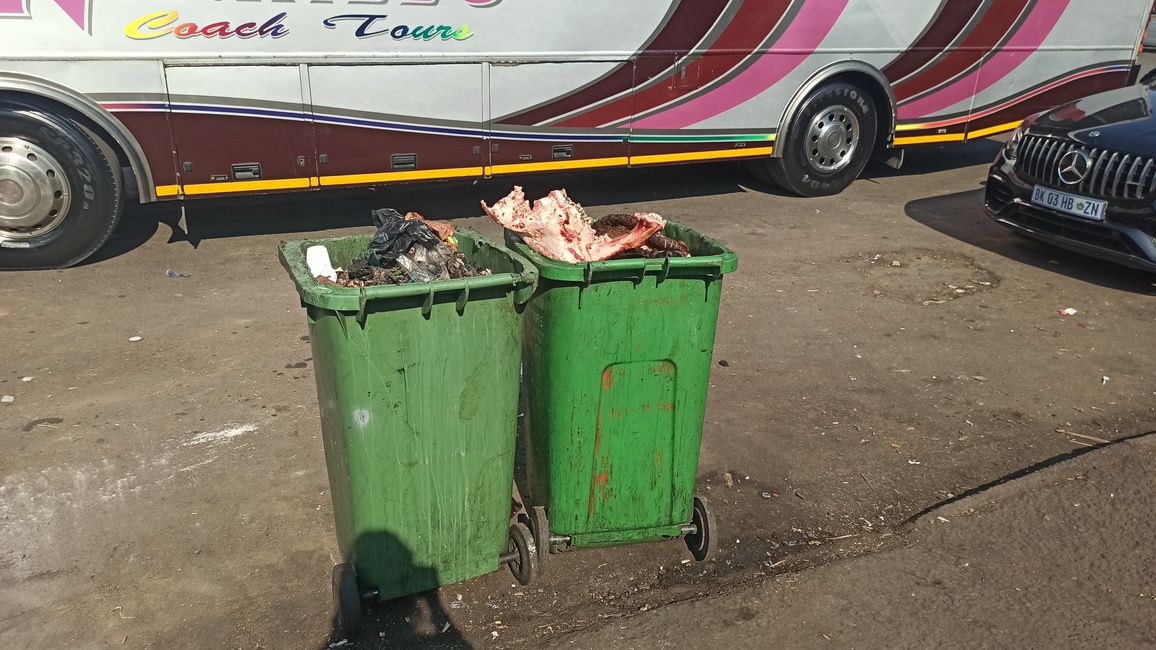

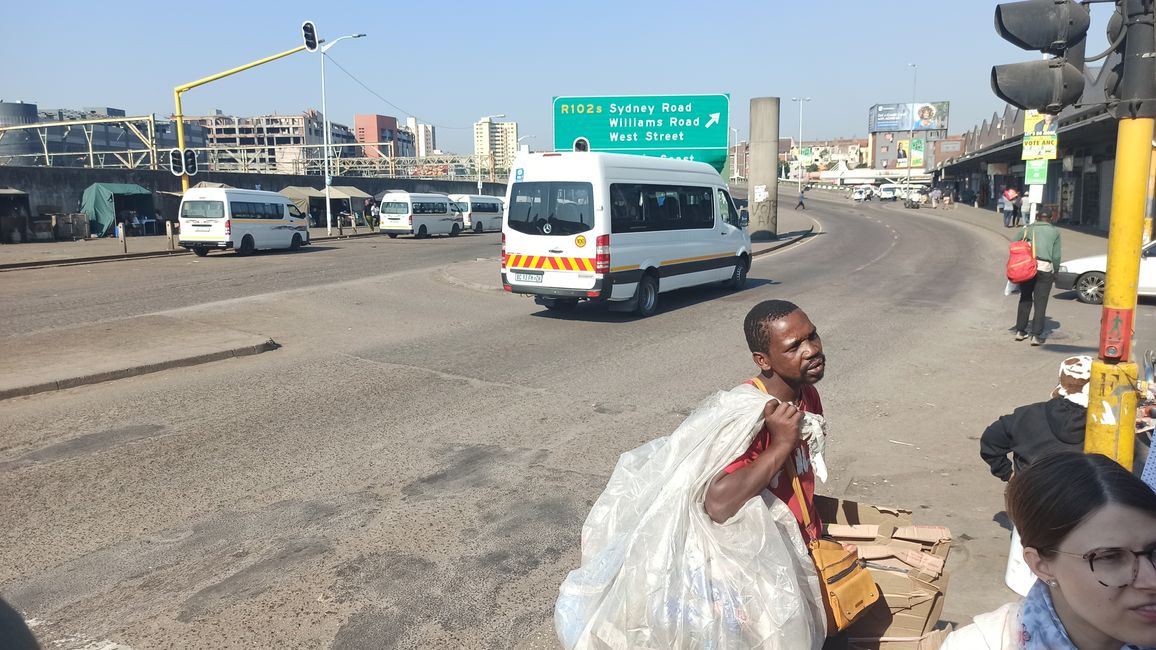

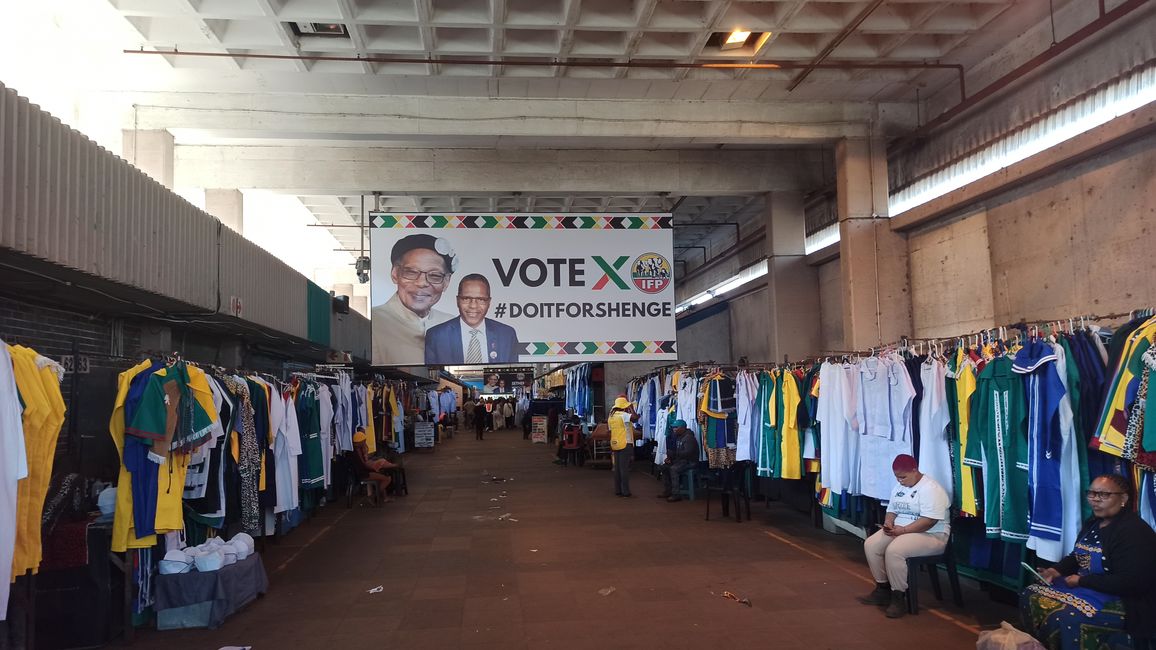


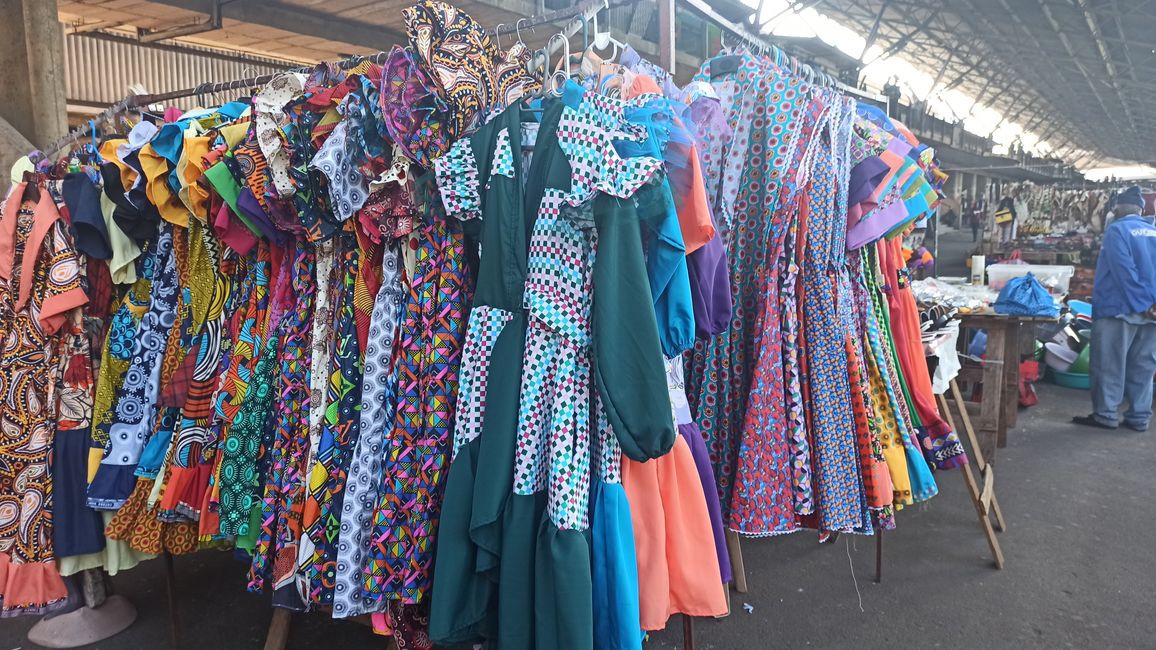
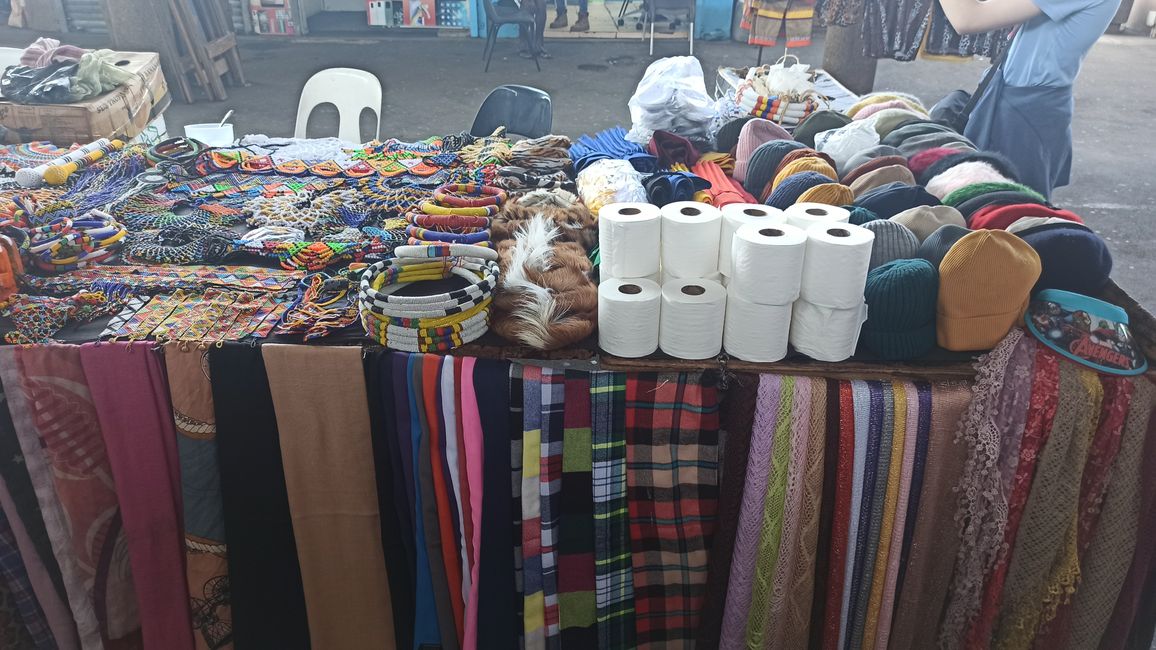
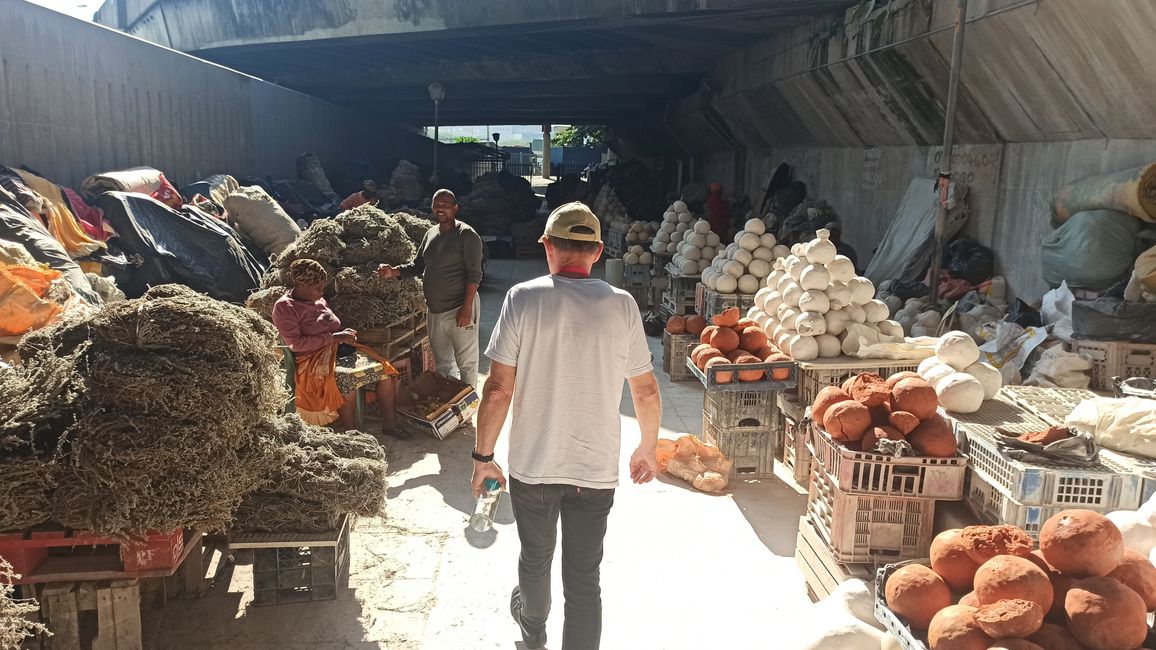
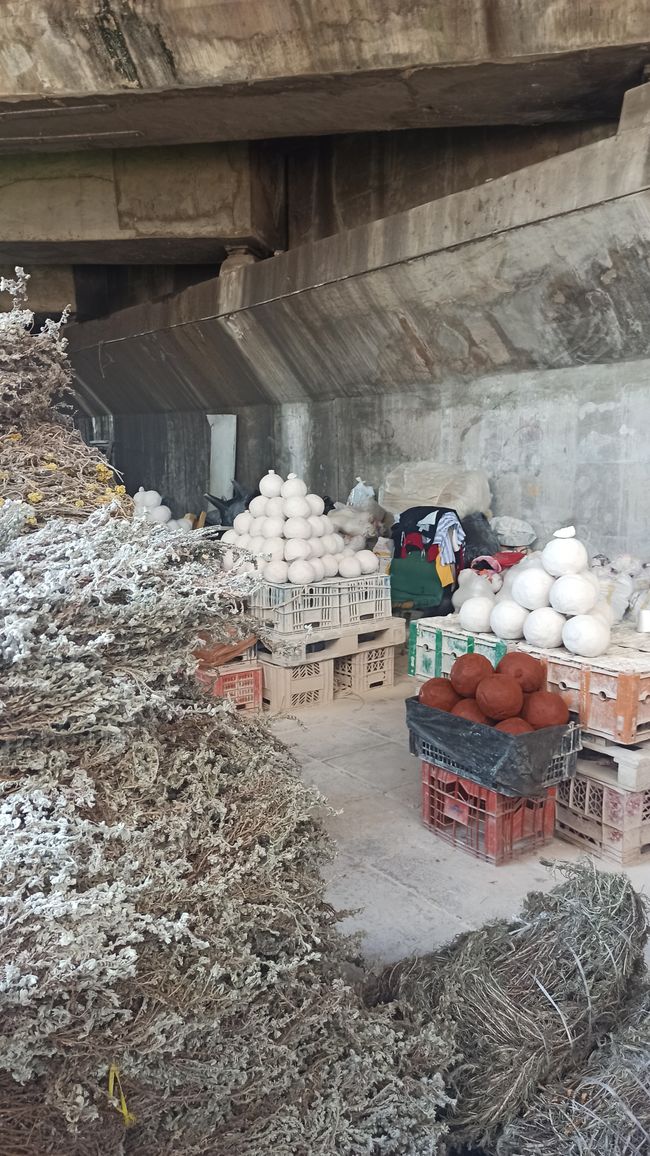
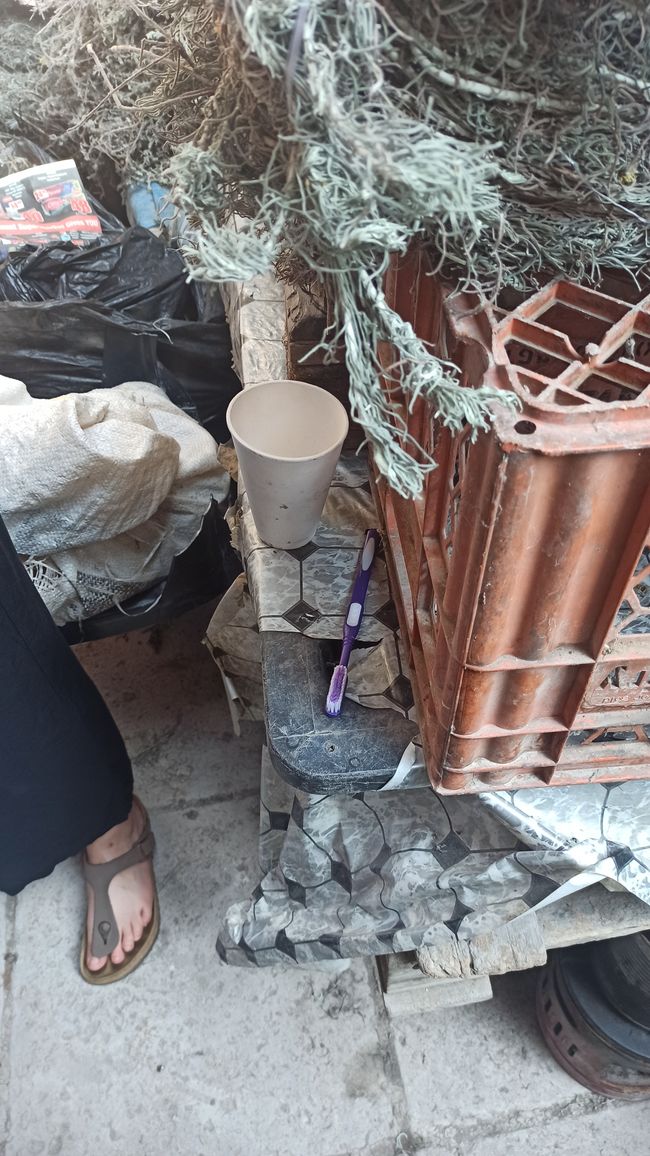
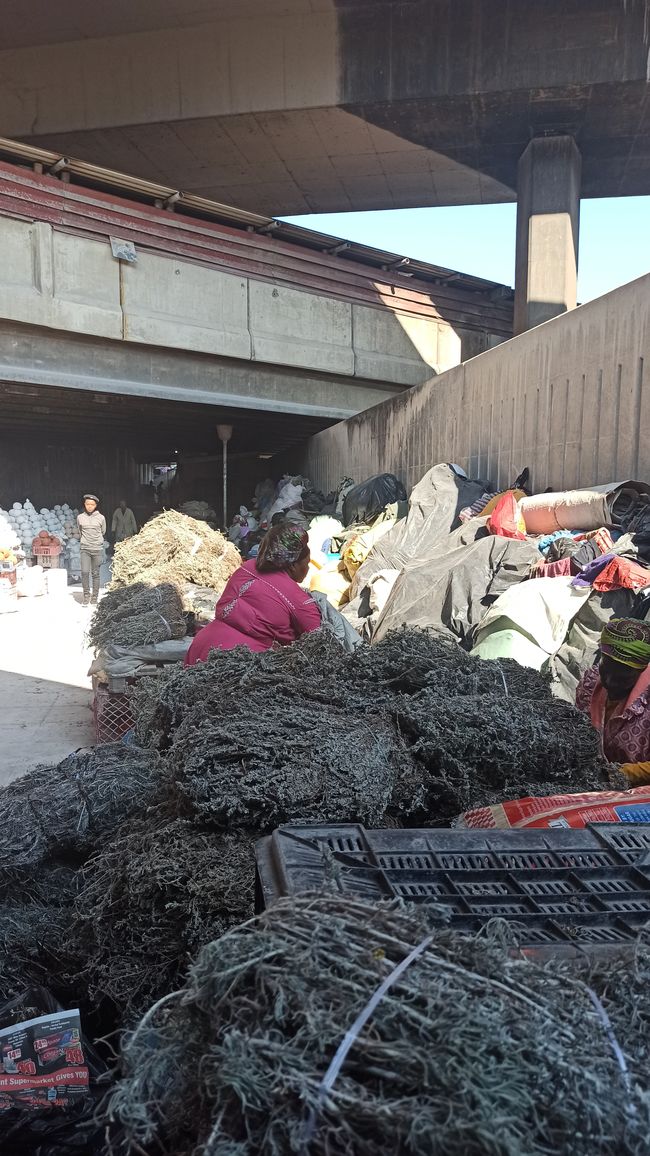

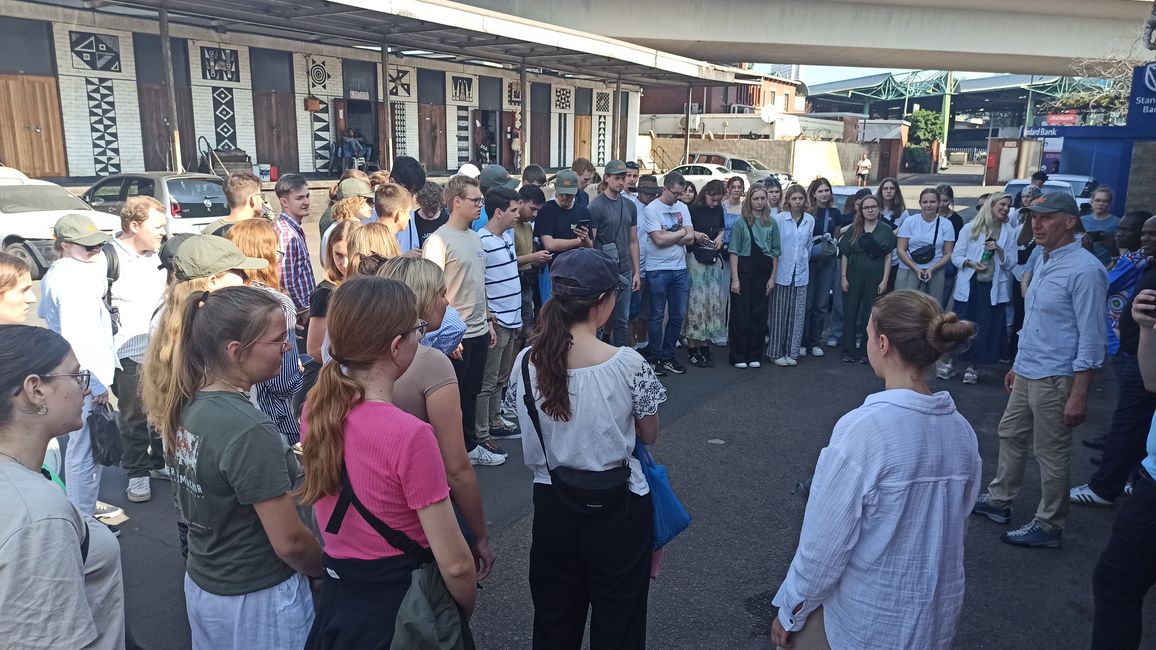

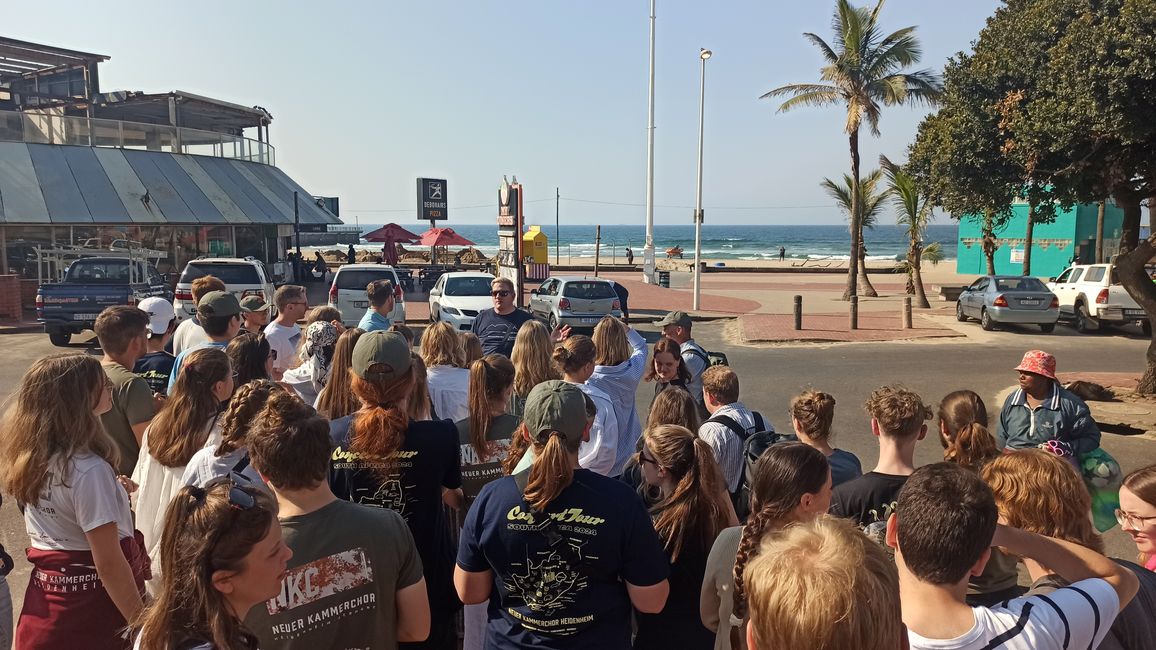
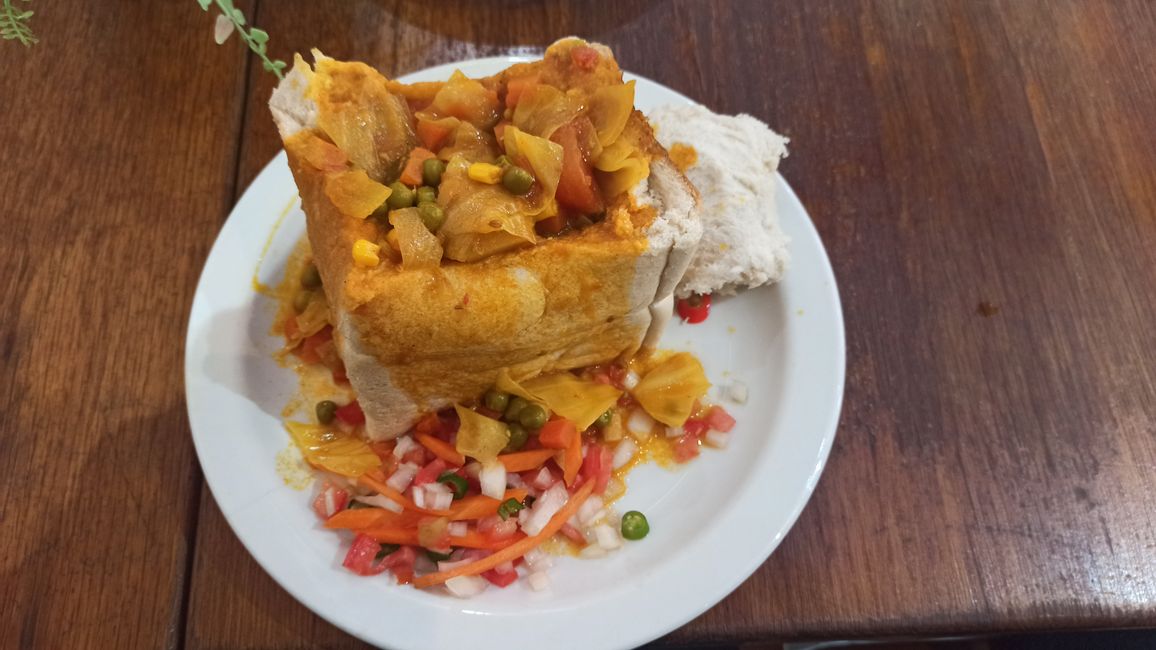
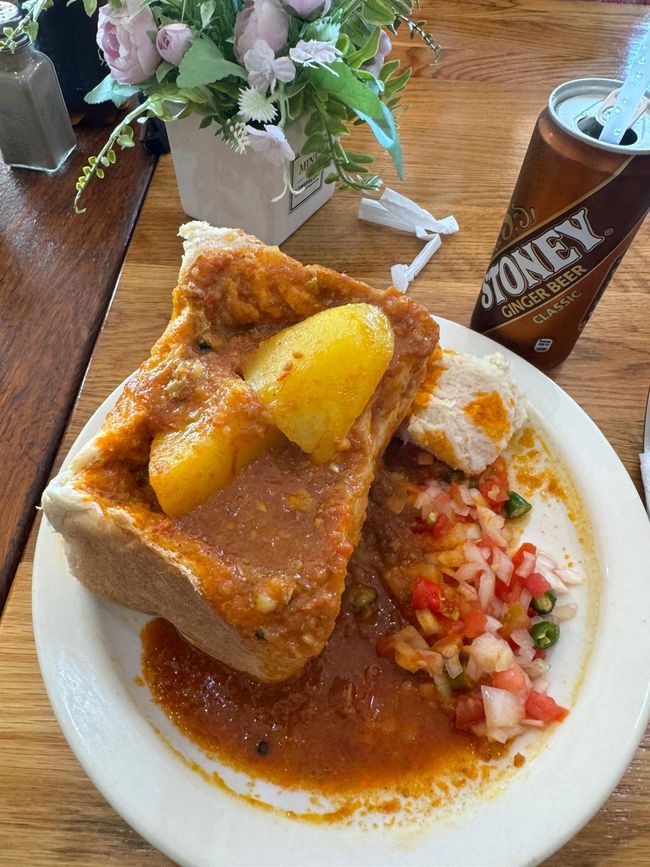
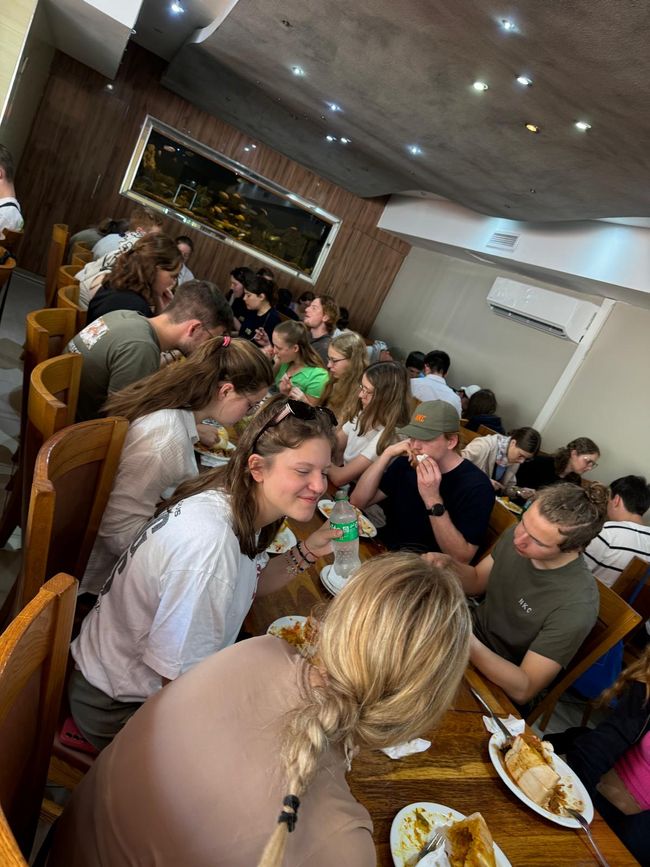
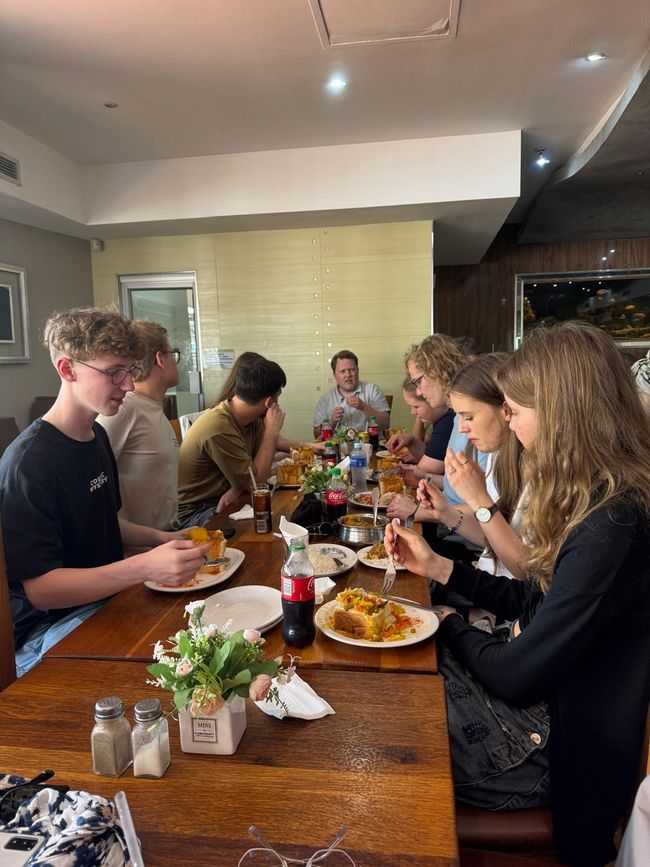
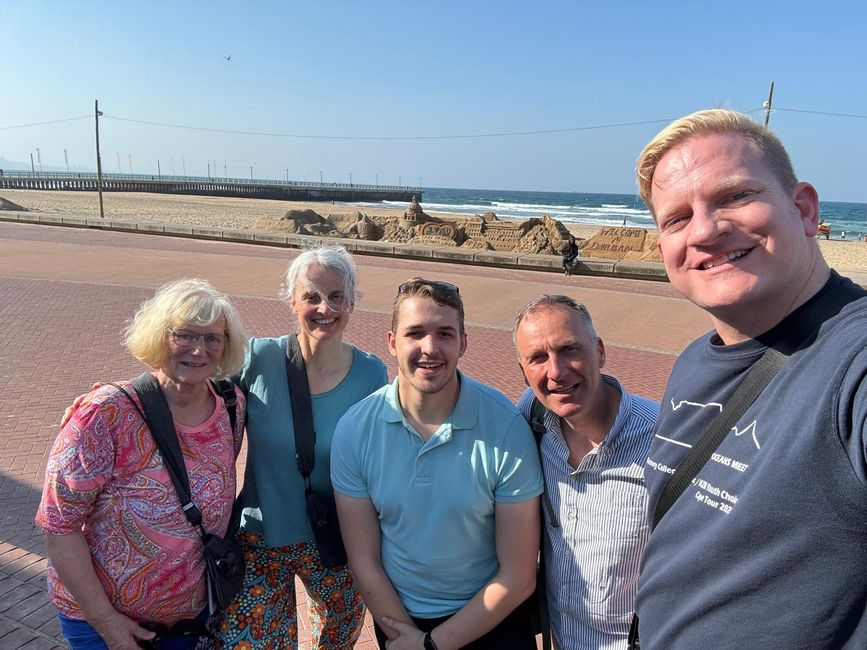

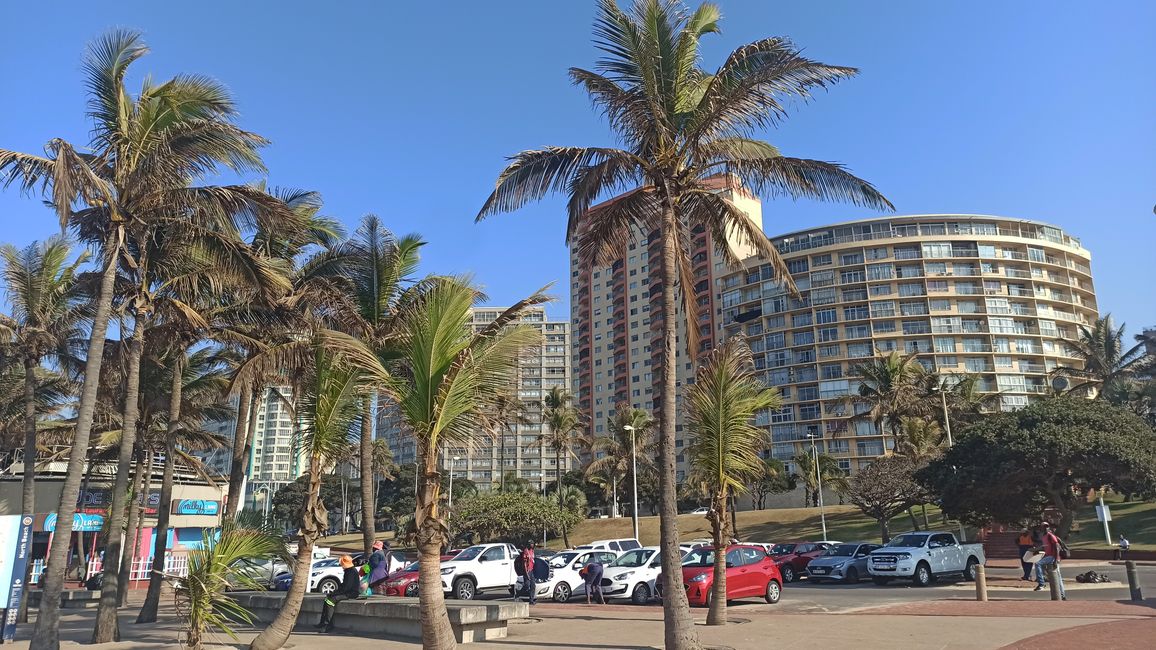



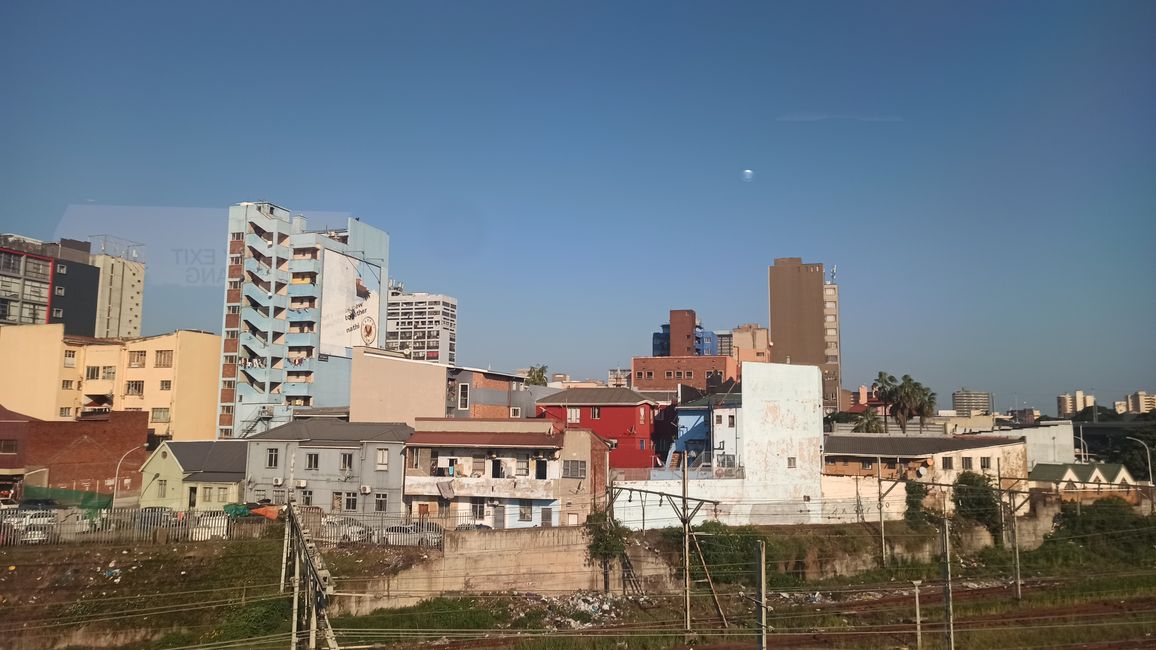
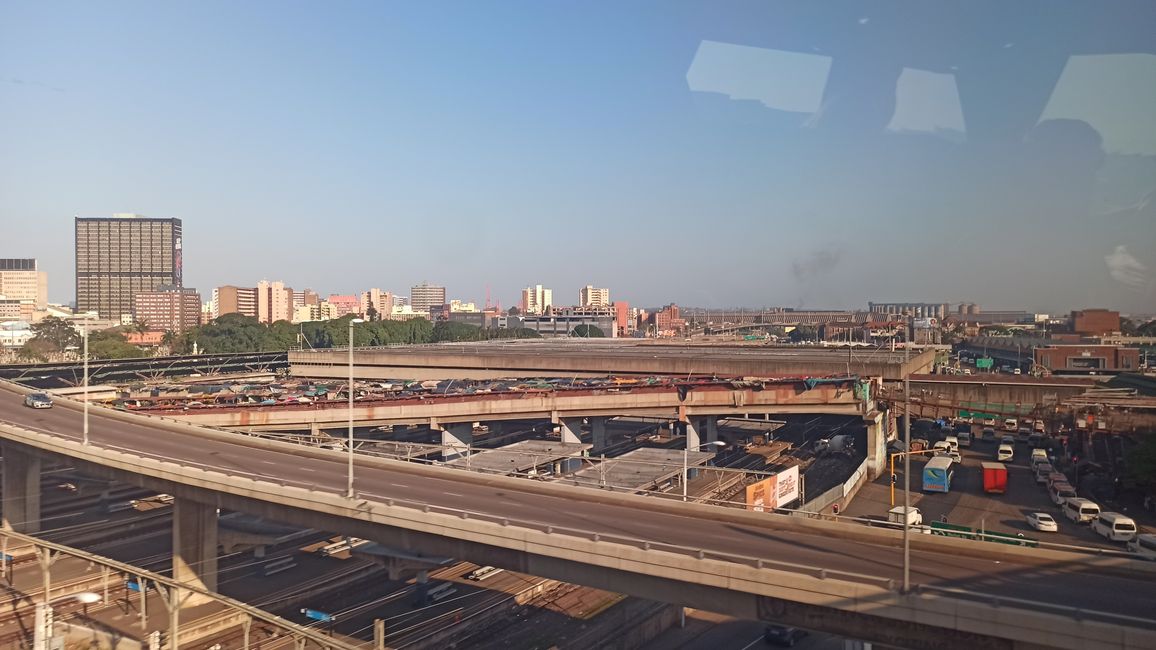
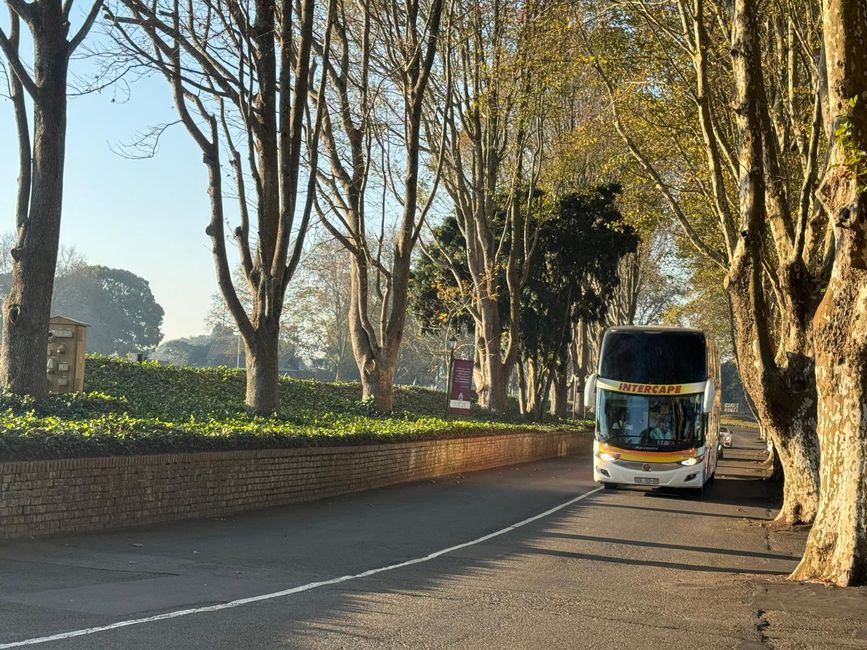
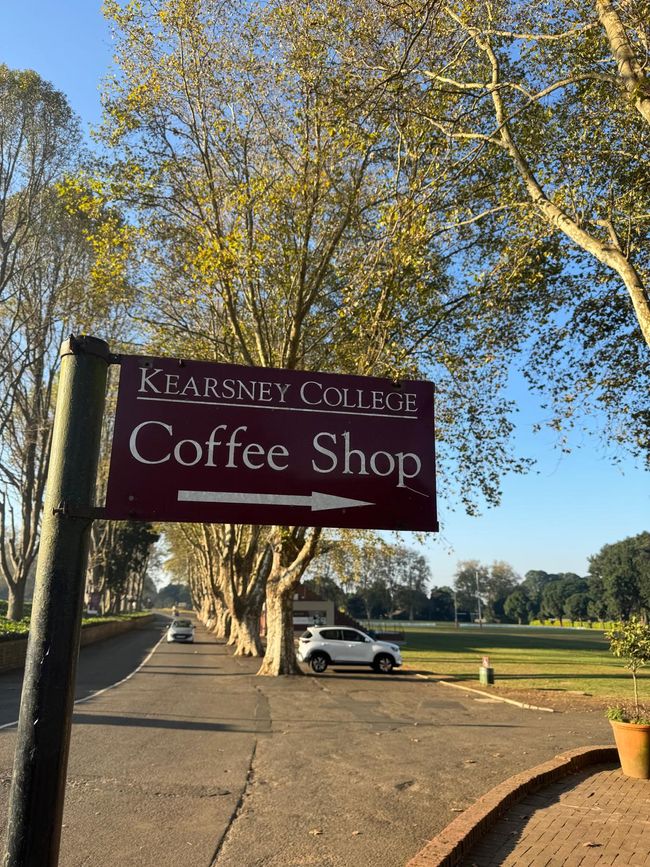

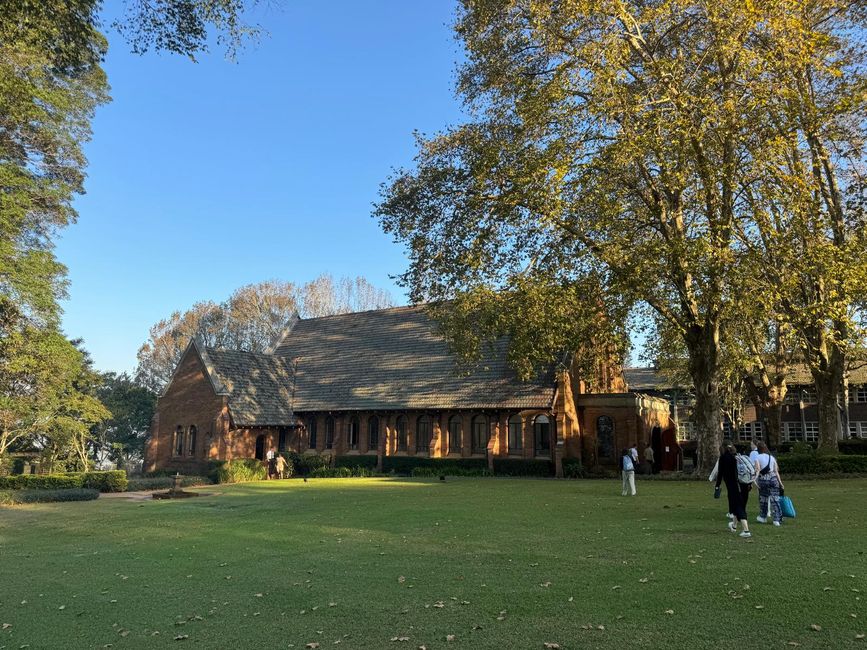
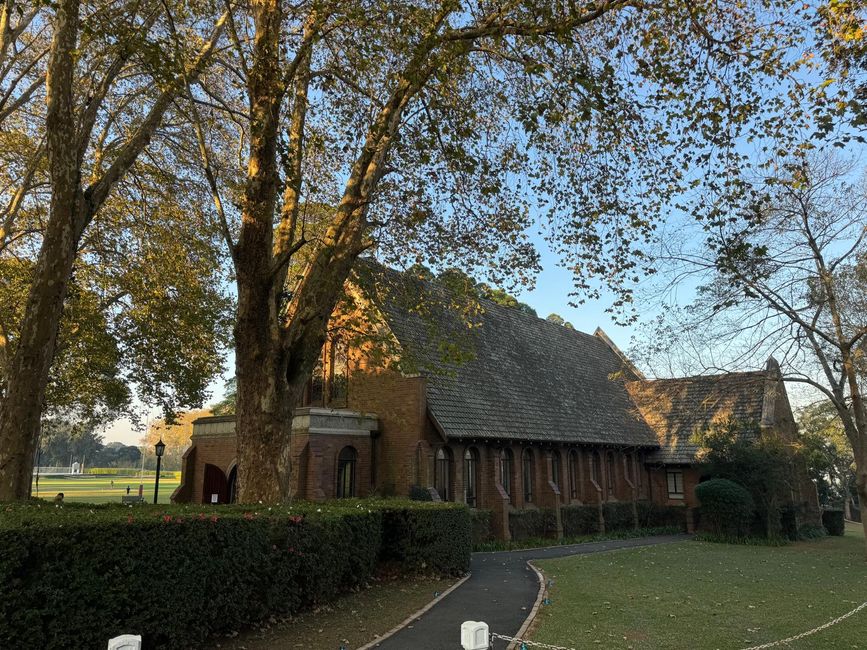
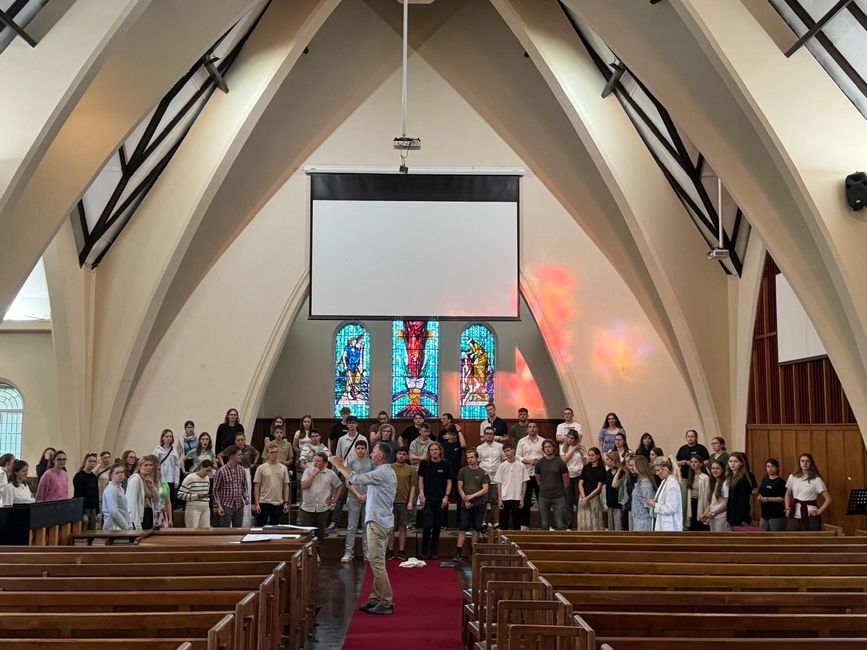
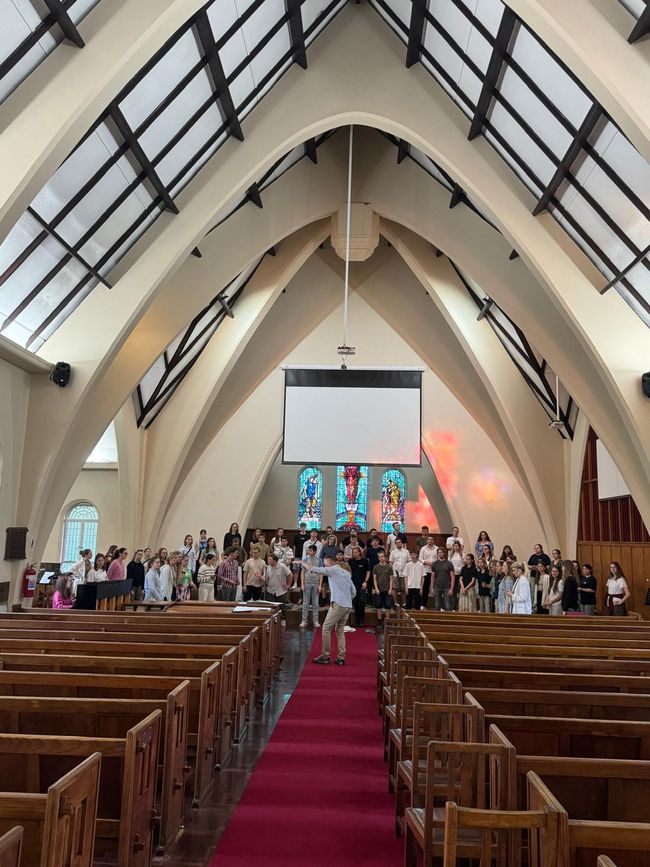
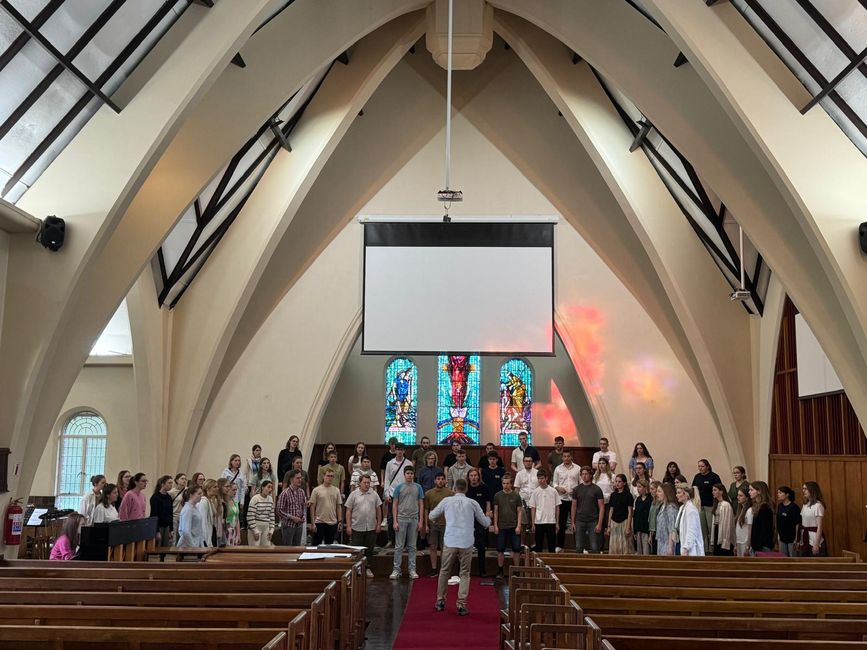
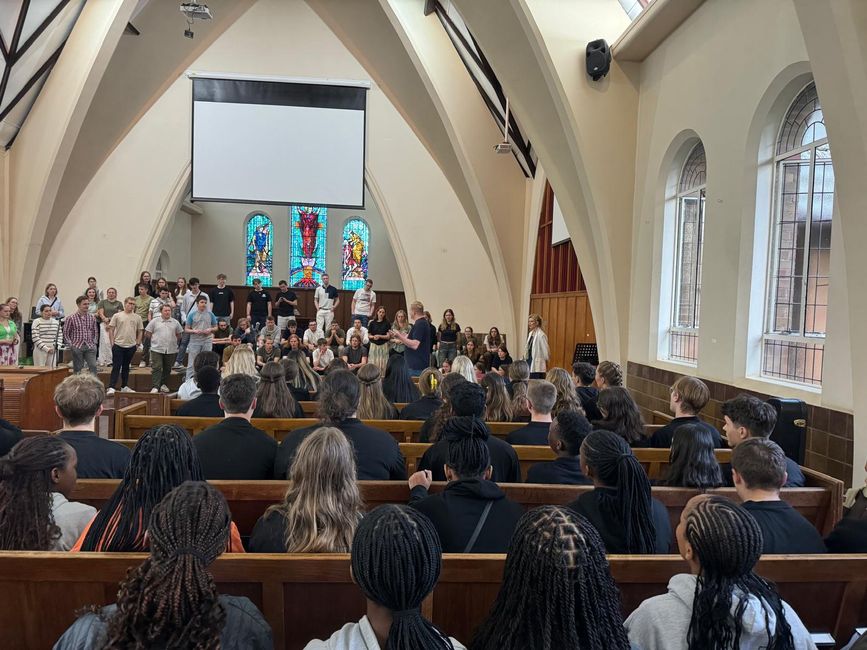

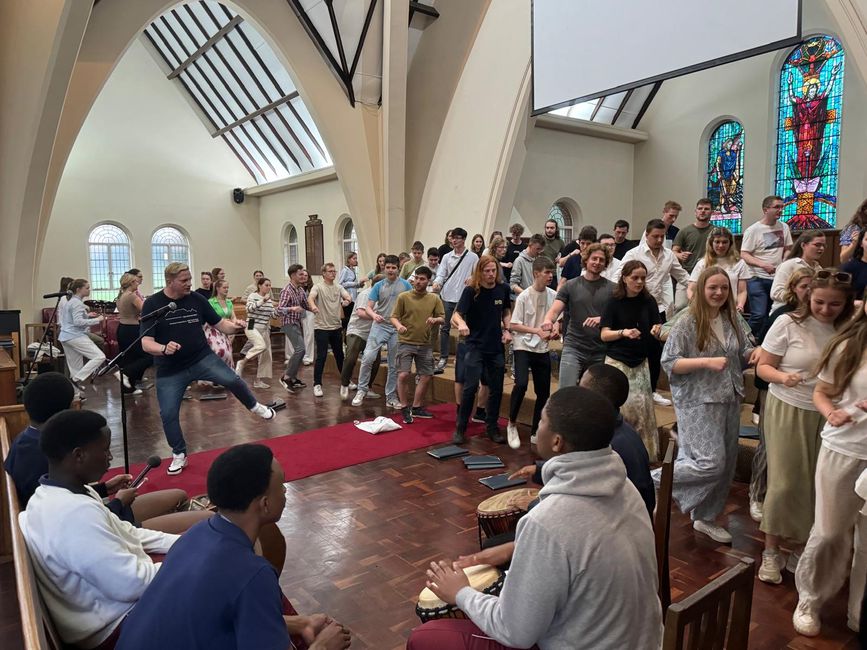
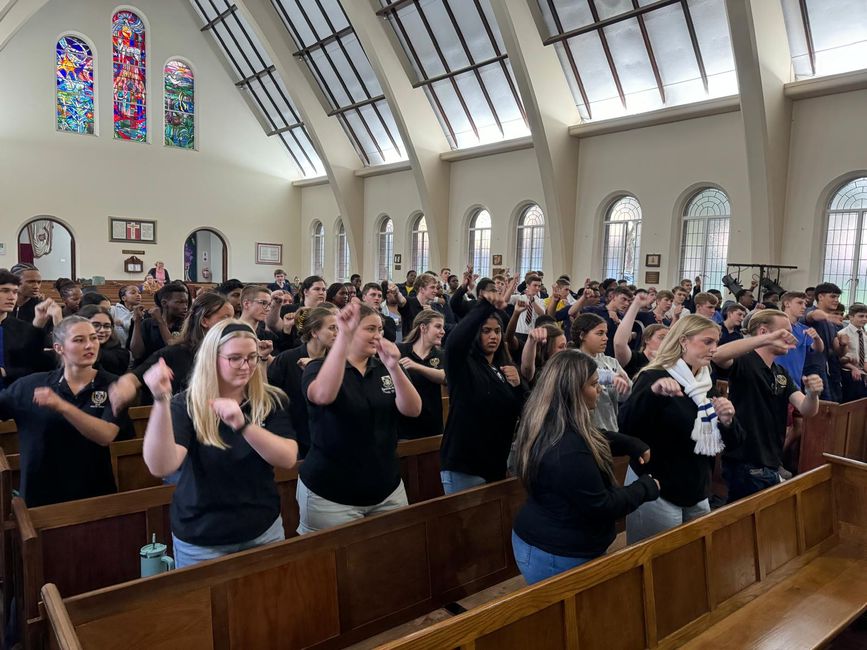
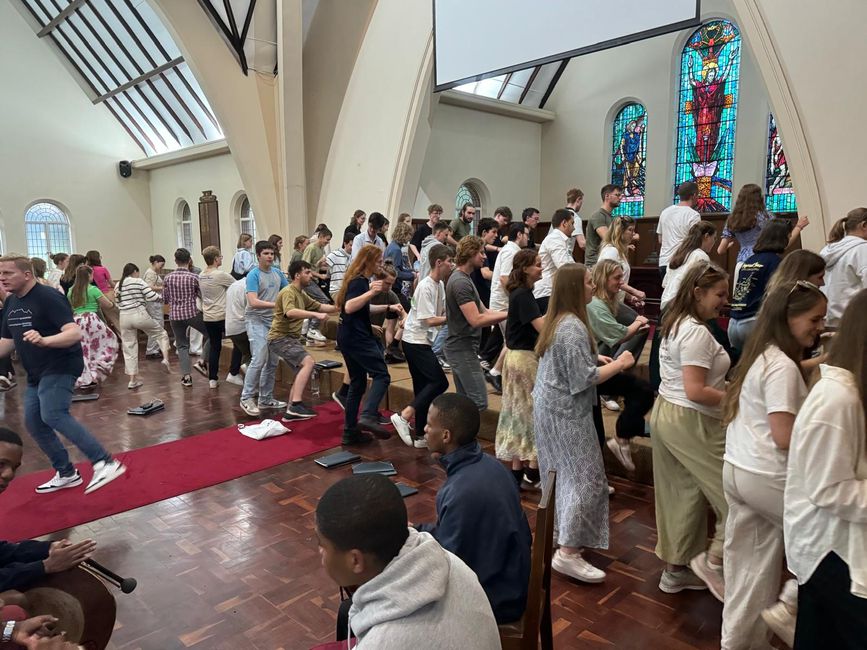



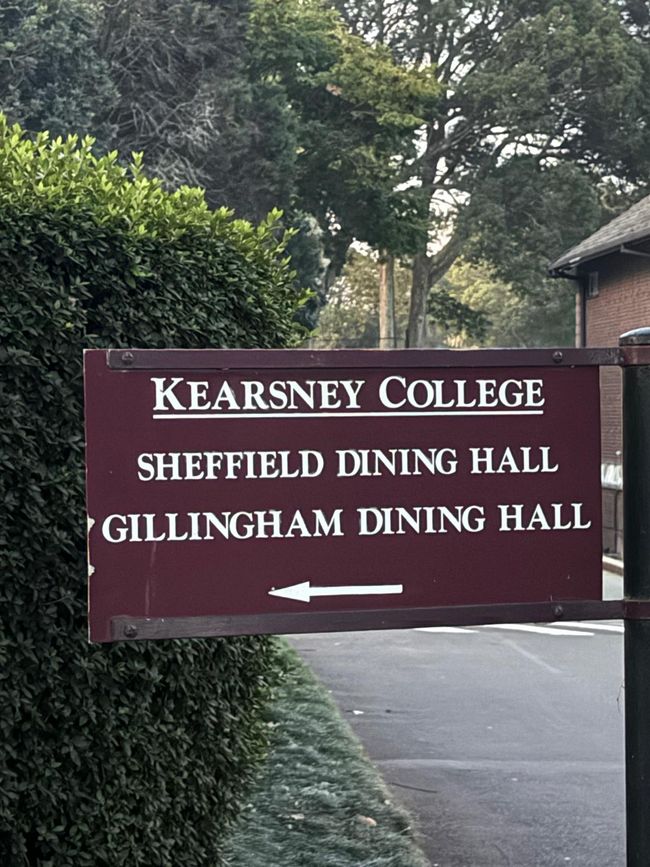
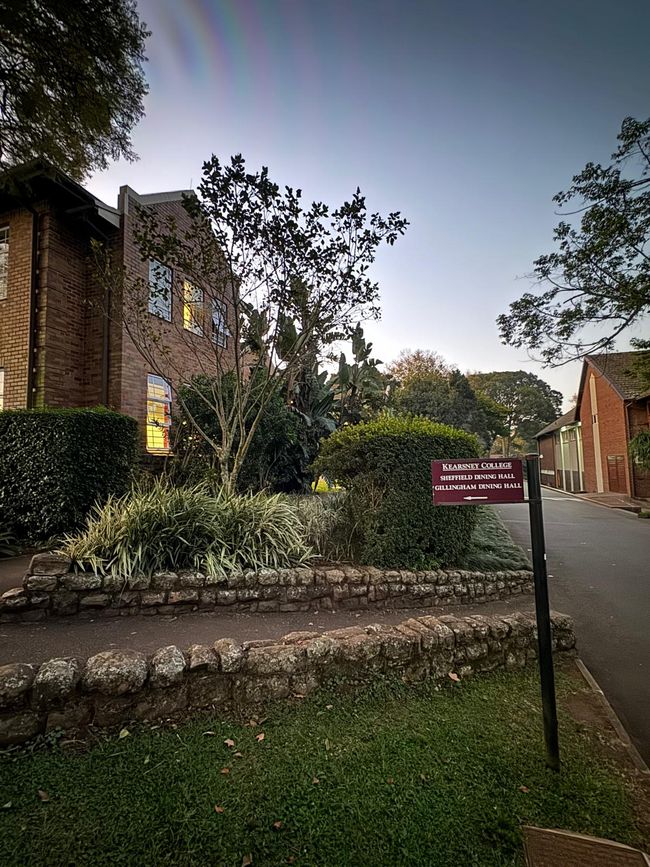
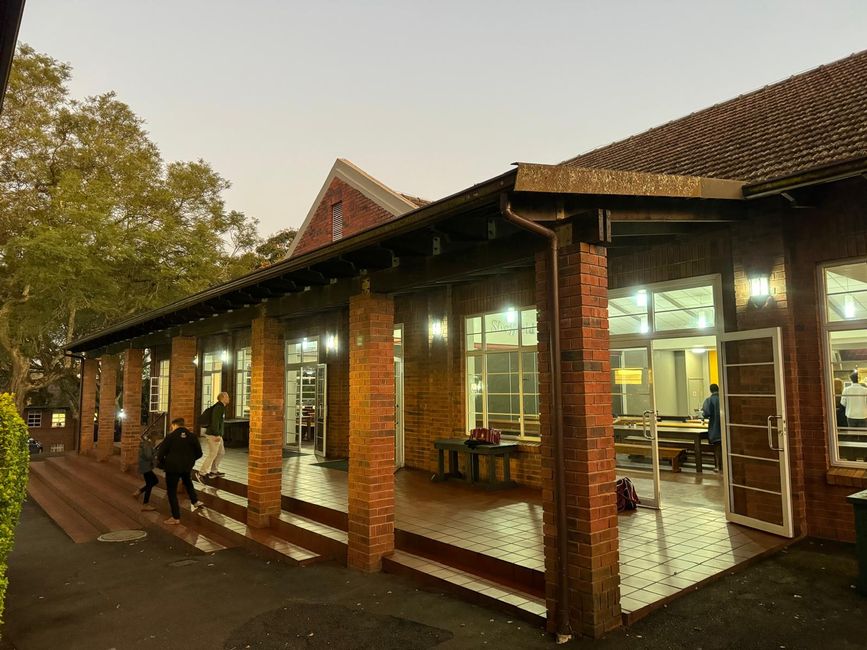

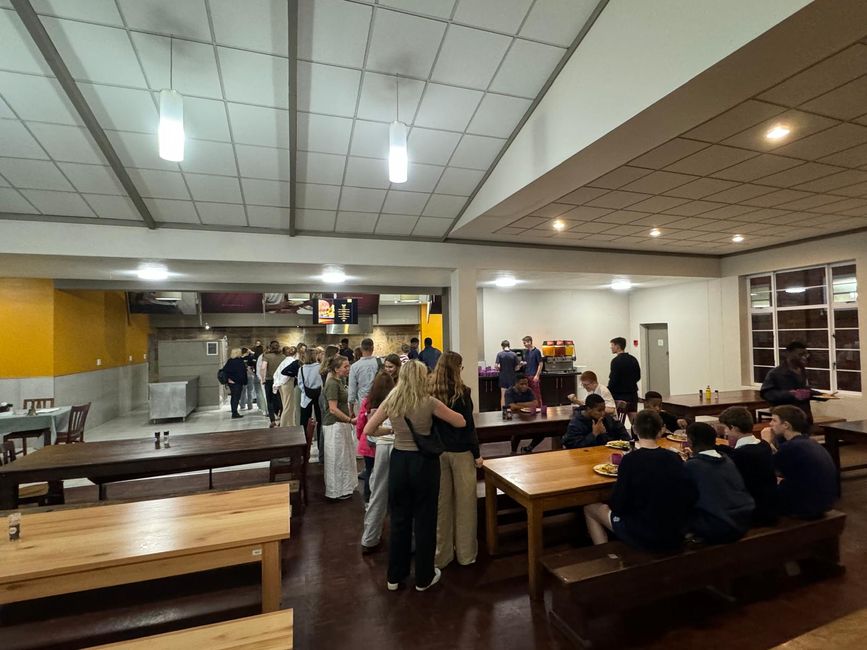
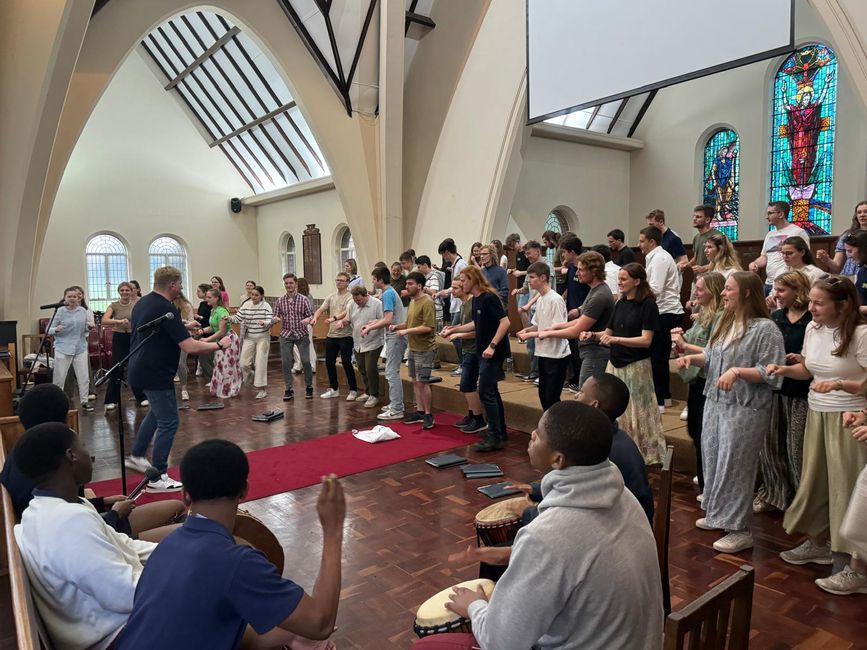
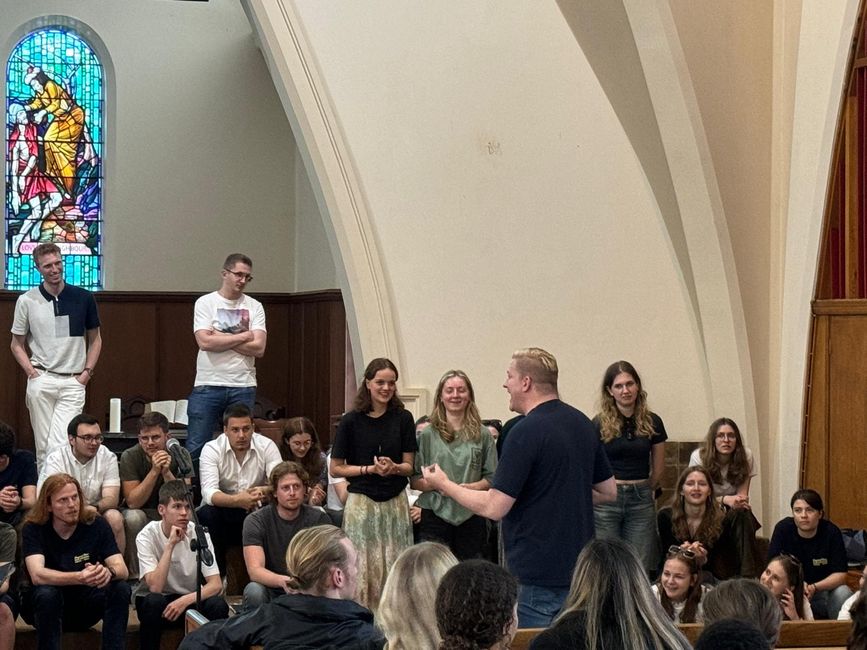
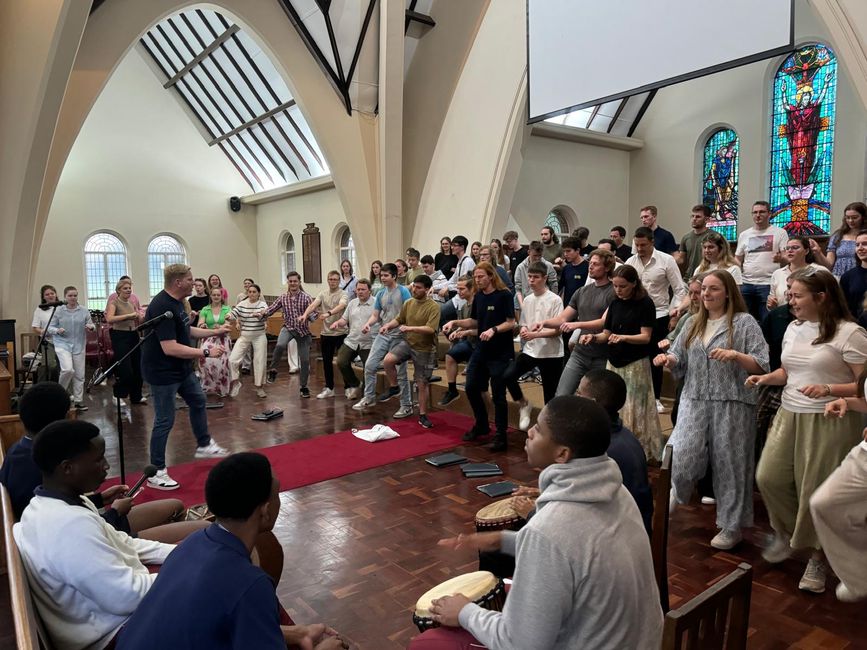
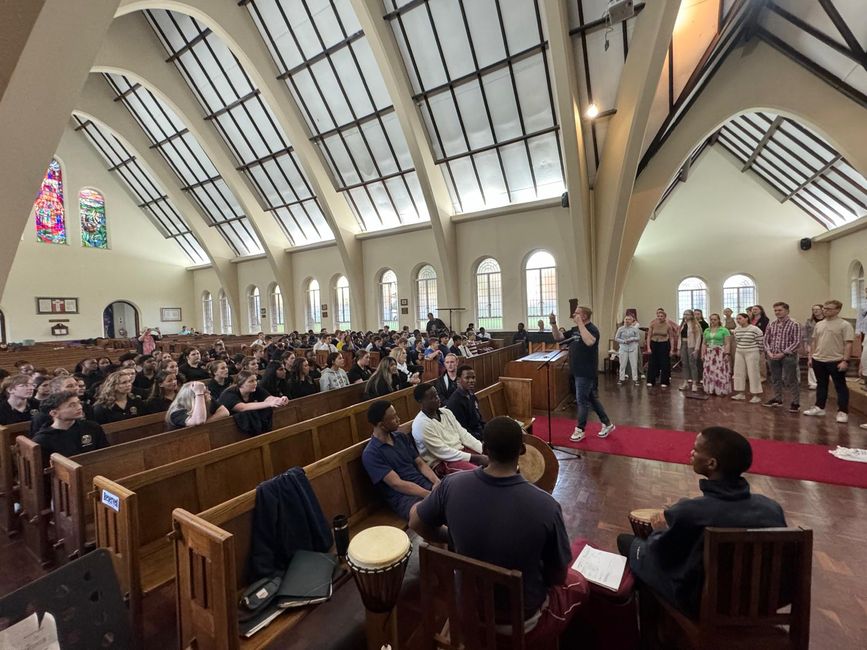
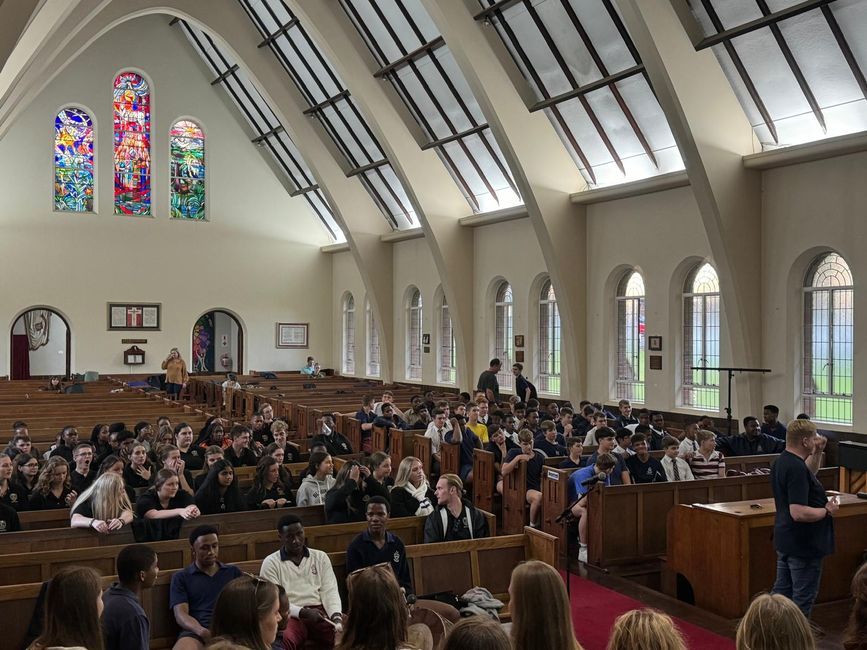


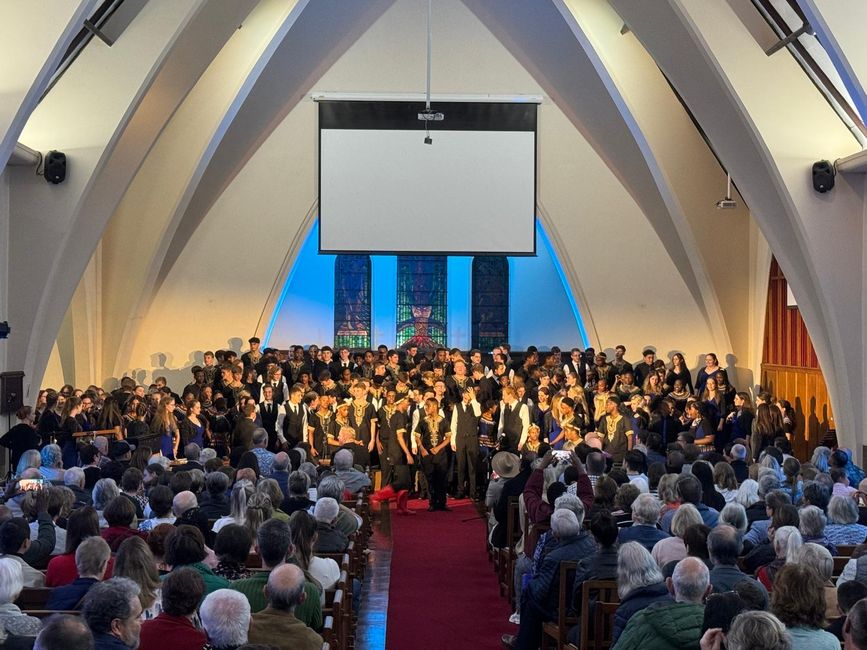
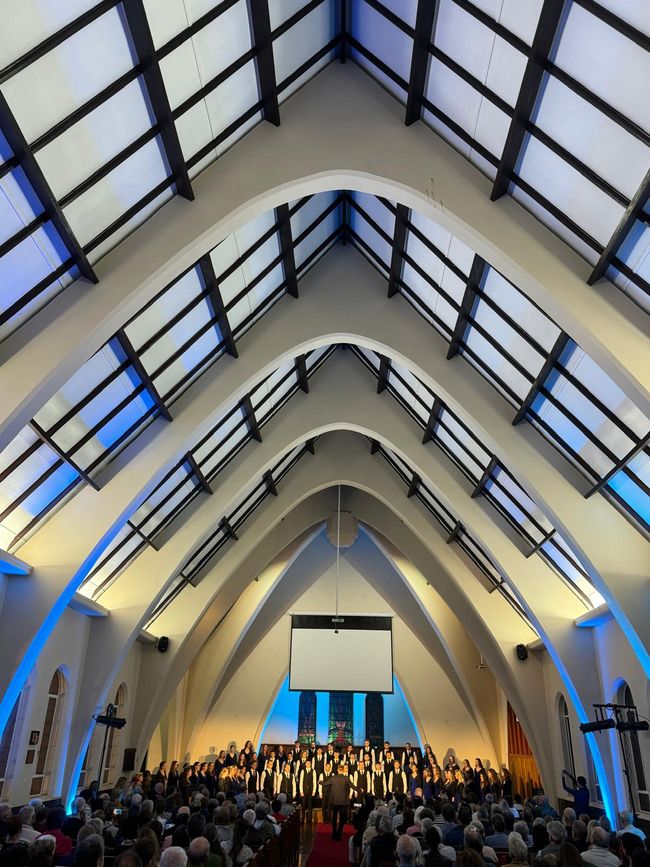
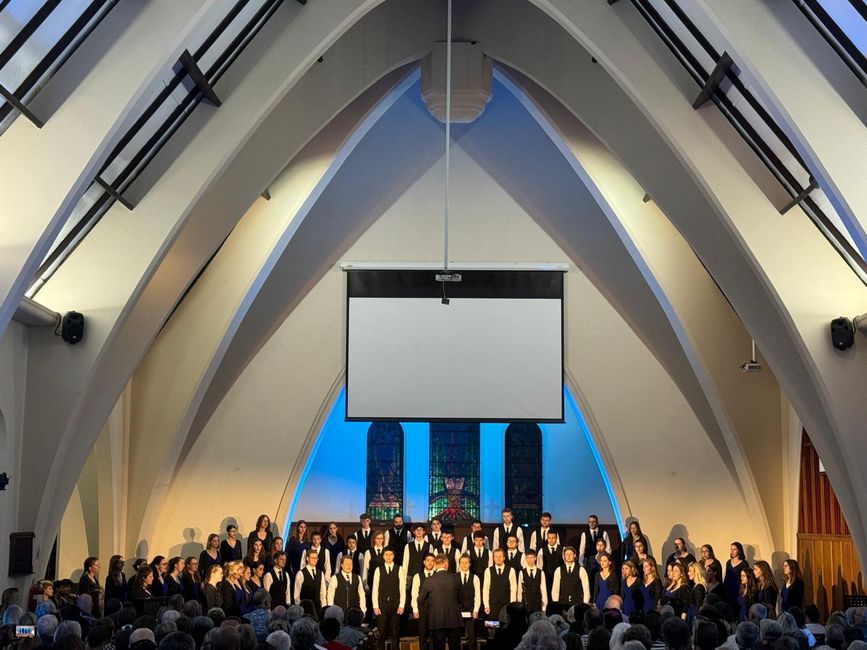
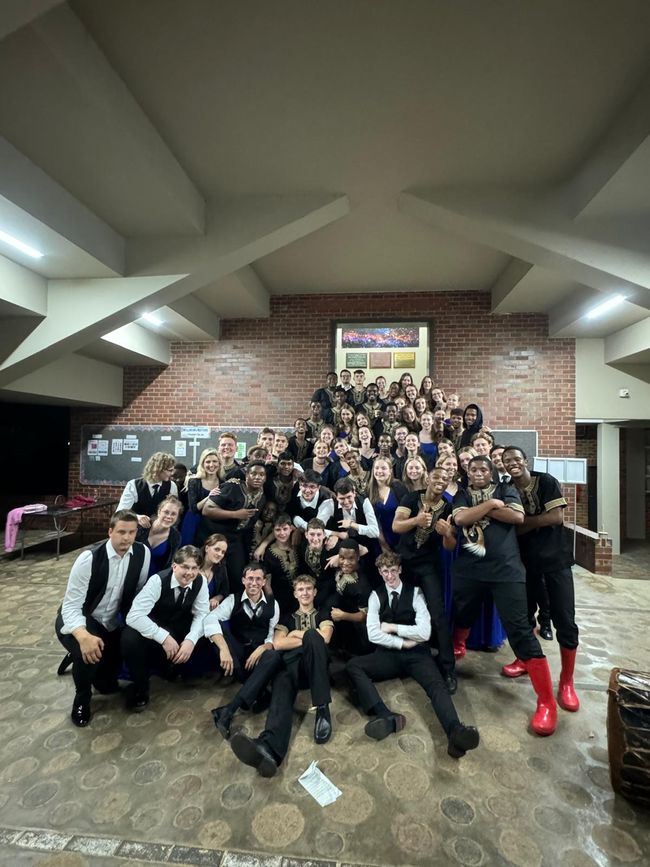
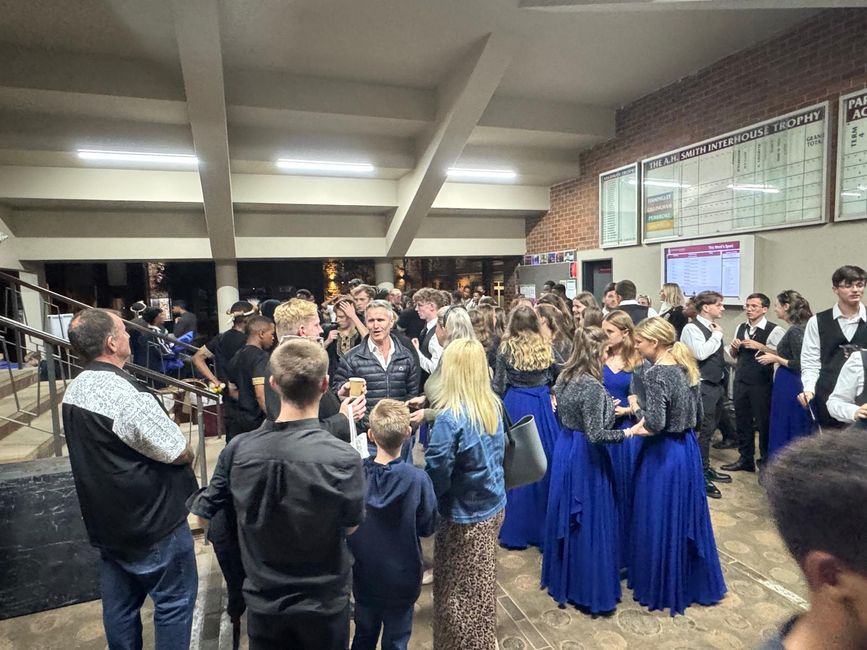
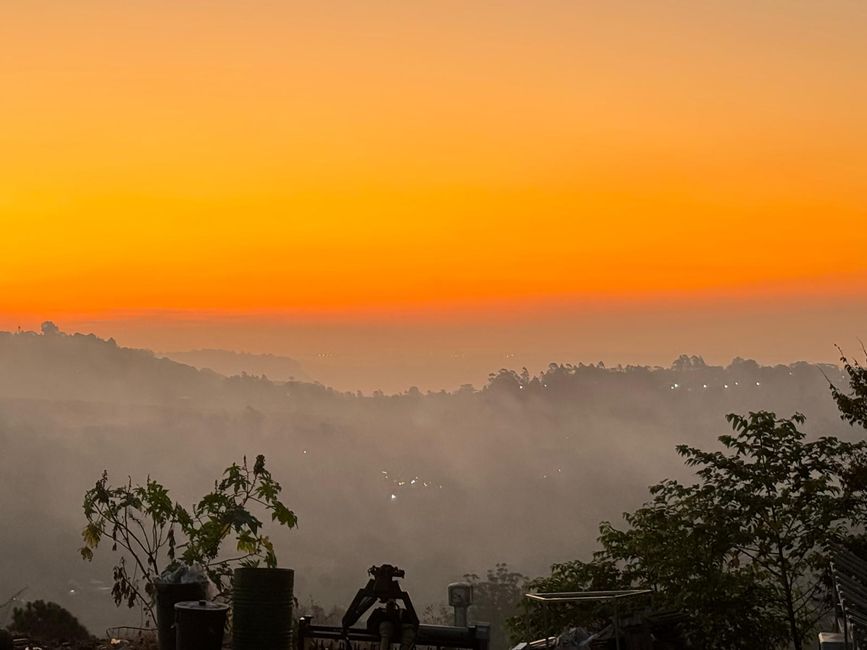
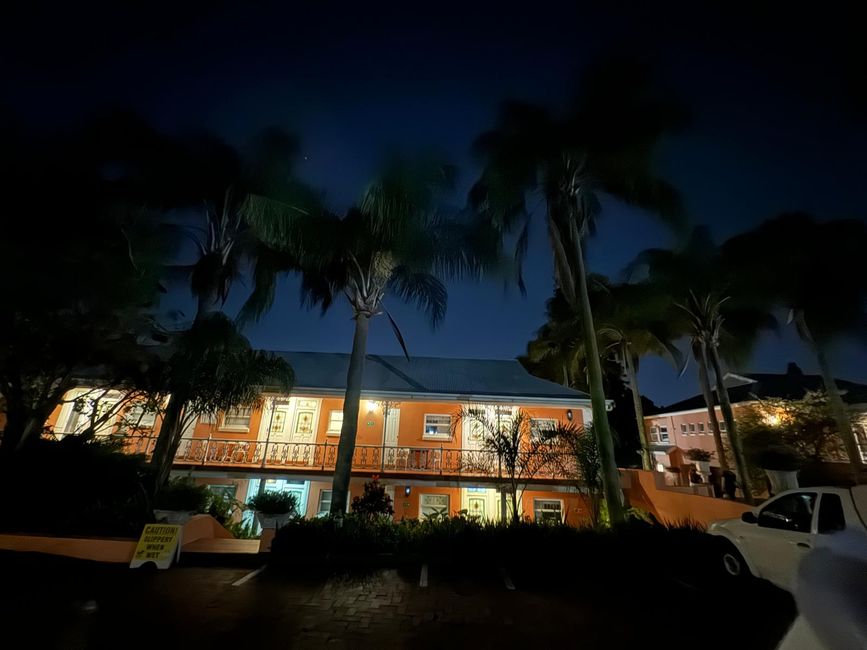
Odoberať novinky
After enjoying a delicious breakfast buffet at Sica's Guest House, we set off by bus towards the city center of Durban. Our destination was the Markets of Warwick.
These markets are located in the heart of Durban and are the city's main public transportation hub. On an average day, almost 500,000 commuters and at least 6,000 informal traders pass through here. Due to the convergence of train, taxi, and bus traffic, this area has always been a market for informal traders. Currently, Warwick is the only informally structured market of this scale in a public space, establishing itself as the most authentic African market that South Africa has to offer. Local traders offer a wide range of products on nine different markets. The offerings range from beadwork, traditional crafts, traditional cuisine, fresh produce, music and entertainment items, to clothing, accessories, and traditional medicine. After receiving an introduction to this market from Richard, a guide who offers tours of the market, we split into several small groups, each led by a guide. We then embarked on an adventurous tour of the Warwick markets.
It is really difficult to describe what we saw there. We collected very intense impressions. All senses were constantly stimulated and every two meters the smells, sounds, and sights changed. Sometimes there was a smell of urine or something else unpleasant, in other corners the smell of fresh fruit or delicious food, and in the next place, smoke filled the air. In some instances, the market only went through very narrow alleys where we had to walk in single file. The market stalls were almost always so overloaded that we didn't know where to look. It was the first time on this trip that we really felt foreign. A very exciting experience. And not always pleasant.
First, we walked through the "Early Morning Market", which has been in existence for over 100 years and provides trading opportunities for more than 2,000 people. It is the historical cornerstone of the area. A variety of fresh produce, spices, flowers, and live poultry are sold at over 670 stalls. Most of the stalls are located in a large hall, which is dimly lit. Each stall has two to three employees. The traders buy their products from farmers or the municipal wholesale market. The operation of the market depends largely on the cart drivers hired by the traders to transport the goods to the individual stalls. The loads of the cart drivers can weigh up to 300 kg! In 2010, the "Early Morning Market" was threatened when the city administration planned to demolish it and convert it into a shopping center. This endangered the livelihoods of many people and they did everything they could to prevent the implementation of this plan, which they succeeded in doing.
We were also deeply impressed by the "Rinderkopfmarkt", where we watched women remove and prepare the meat from the skulls. Beef head meat is a delicacy of the Zulu people. Originally, the preparation of beef heads was only done by men, but today, women are the predominant traders in this market. Traditionally, only men are allowed to sit at the tables and enjoy their meal, while women can buy the meat to take away.
In stark contrast was the colorful "Brook Street Market", where colorful aprons and dresses, traditional Zulu hats, shoes, bags, and household items are offered. This market is located next to the famous Badsha Peer Shrine. The Badsha Peer Shrine is a homage to Badsha Peer, a Muslim saint who came to Durban in 1860. Since 1943, a worship ceremony and banquet in honor of Badsha Peer have been held every year, a week-long ceremony that culminates in the "Brook Street Market" next to the shrine. There is a very good working relationship between the Badsha Peer Mazaar Society and the followers, and during the ceremony, trade is suspended by mutual agreement so that the annual event can take place. In addition, in the year 2000, the Mazaar Society donated a part of the covering that now covers the "Brook Street Market". This donation was the starting point for the redesign of the market.
The "Brook Street Market" is also of historical significance because it is one of the few places where three different religions are buried side by side: Christians, Muslims, and Jews.
Right next to the "Brook Street Market", we arrived at the "Lime and Impepho Market". This market sells two special products: umcako (mineral lime) and impepho (traditional incense). The lime traders sell balls made of white and red lime, which is mined in iNdwedwe, north of the city. The lime is used by aspiring and newly trained izangoma (traditional Zulu healers). Other traders sell impepho, which is used for communicating with the ancestors. Apprentice and qualified izangomas apply umcako to their skin to indicate their levels of training. These products are also used as sunscreen, dye, and for pottery. In addition, women consume umcako during pregnancy. The female traders of this market also live on the market. The workplace under a bridge is also their home. Unimaginable for us.
Next was the herbal market, where traditional healers and herbal sellers trade. The market is closed every night so that the traders can safely store their goods. The trade at the market works similar to a Western pharmacy. Customers approach the herbal sellers and traditional healers with their complaints, and they provide them with medicine accordingly. In addition to the herbal sellers, there are many others who support the market, such as herbal grinders. These men are employed for hours at a time to grind the herbs into a fine powder that can be consumed by customers. Grinding the herbs is physically very strenuous work. The herbal grinders always remain within sight of the traders to ensure that no one tamper with the medicine.
The herbal market was like another world. A very narrow alley led through market stalls piled up with herbs, bark, and other dried plants. But we also saw a skinned snake and hanging dead monkeys. Filming and photography were prohibited in this market. But what we saw there, we will not forget so quickly.
We left the herbal market via a bridge that also serves as the "Music Bridge Market". It is called that because there are so many music products to buy here, and loud music is played.
Furthermore, there is the bead market where the traders sell their self-designed and handmade products. The trade only takes place on Fridays, so unfortunately, we could not visit this market.
However, some of us still visited the Victoria Street Market. Here, there are small individual shops that offer jewelry, spices, hides, traditional crafts, and beadwork. With bags filled with spices, these groups then returned to the starting point of our tours.
We thanked all the guides and sang the "Loreley" for them. Then we continued to a local restaurant on Durban's beachfront. Here, we were served a South African specialty: "Bunny Chow" - a loaf of white bread carved out and filled with a spicy curry dish of beef, lamb, chicken, or beans. It was very delicious, but for some, it was a bit too spicy ;) Afterwards, we had half an hour to enjoy the fresh sea air and we even had the luck to see dolphins swimming and jumping with the waves.
Afterwards, we set off towards Kearsney College, which we reached around half past three. Here, we were going to have a joint concert in the evening with the Kearsney College Choir, an all-boys choir, and a mixed SATB youth choir, the KZN (KwaZulu-Natal) youth choir. Both choirs are under the direction of Bernhard Kruger. The Kearsney College Choir is an award-winning choir that was crowned the twelfth-best choir in the world by the international organization INTERKULTUR in November 2017. In June, the choir will embark on a concert tour of Germany and will even perform at the Elbphilharmonie. This concert is already sold out!
After a short rehearsal in the school's church, both choirs joined us and under the guidance of Bernhard Kruger, we learned a South African song including choreography together in just 15 minutes.
Afterwards, all singers had dinner in the school's cafeteria before the concert started at 7 PM. The KZN youth choir started the concert, impressing with their focus, the joy in their eyes while singing, and their very clean and beautiful singing. They performed works by Johann Sebastian Bach, including "Jesu, meine Freude," and an arrangement of Sia's "Chandelier". After a short break, we performed a calm program influenced by German choral literature for 20 minutes. Then, we continued the concert with "Witness," "Nearer my God," and our two Queen performances. But then we cleared the stage and made way for the highlight of the evening - the Kearsney College Choir. And what they delivered on stage was truly impressively amazing. Everything was memorized, with choreography, super clean singing, and an energy that we had never seen before. It was simply a joy to watch these boys! So if any of you have tickets for the Elbphilharmonie in June - you can look forward to it!!!
The concert concluded with all three choirs performing the previously learned piece. It was a magnificent concert, and this was reflected in the applause of the audience. Happily, we made our way back to our accommodation around 10 PM. This evening will be remembered for a long time!
Odoberať novinky
Odpoveď
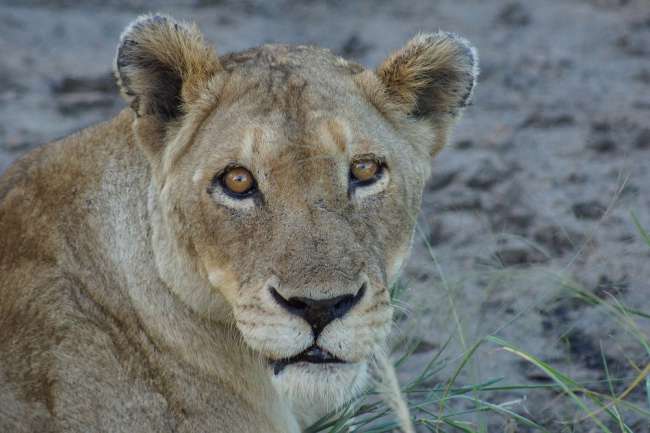
Cestovné prehľady Južná Afrika
